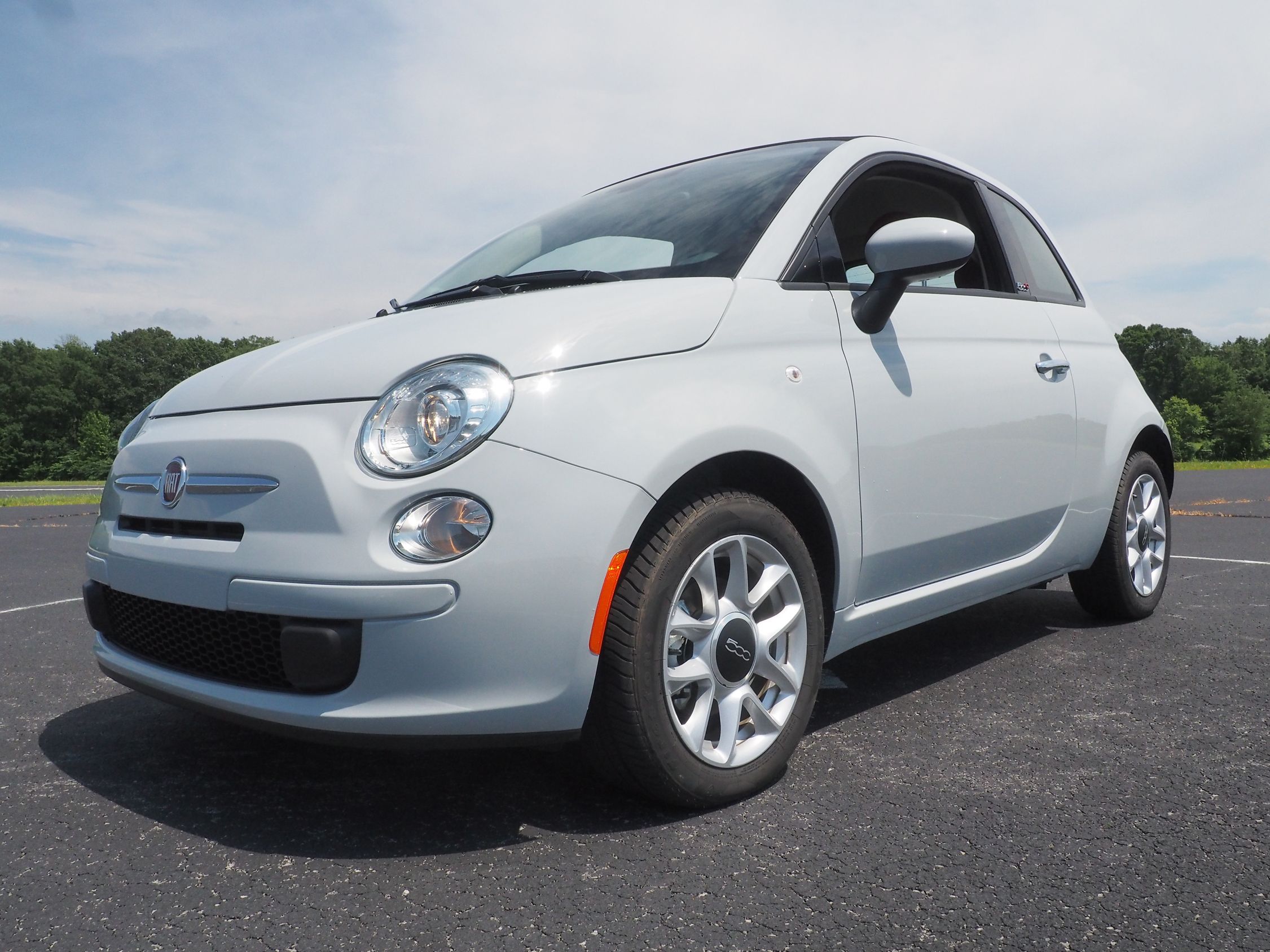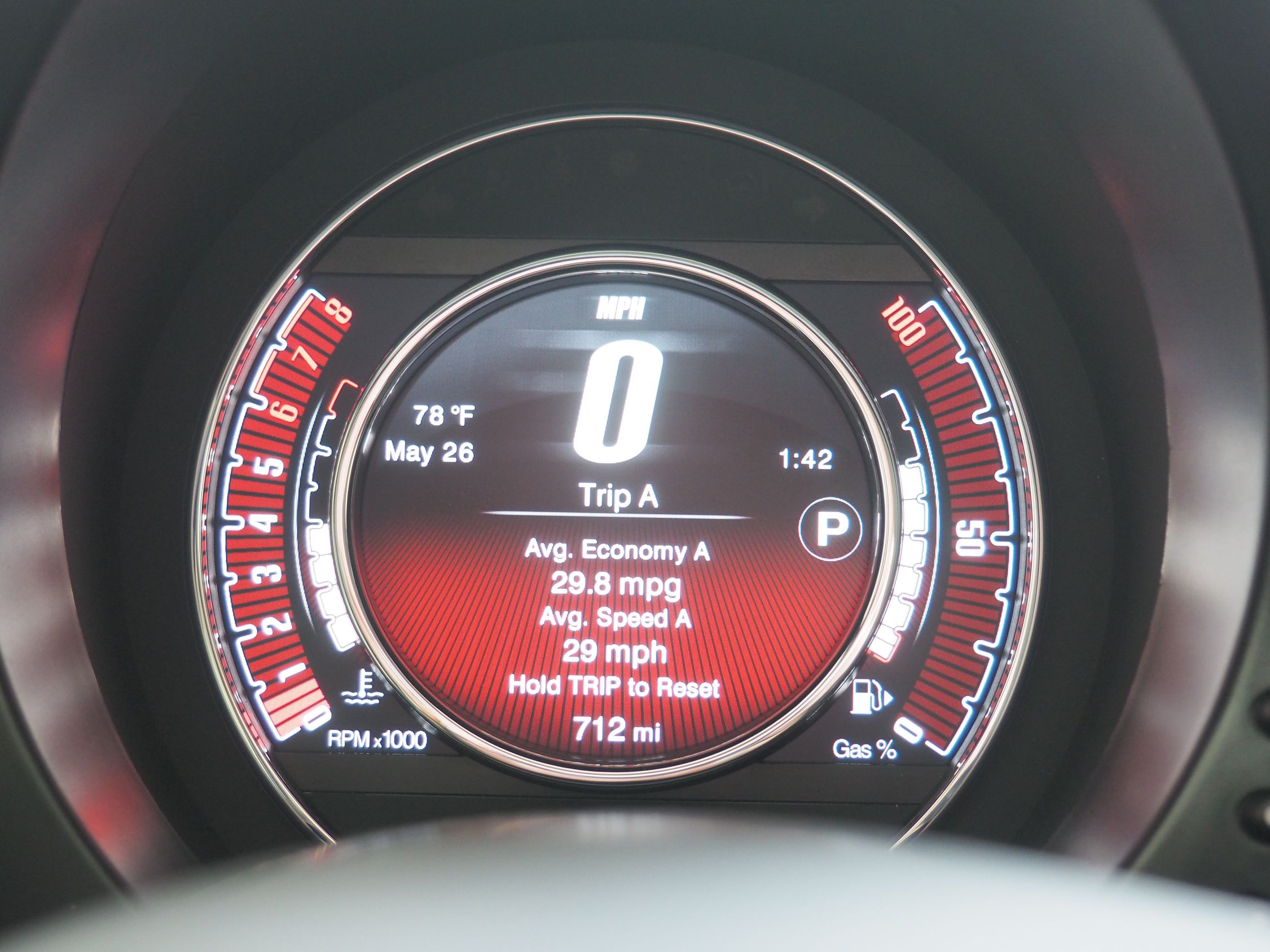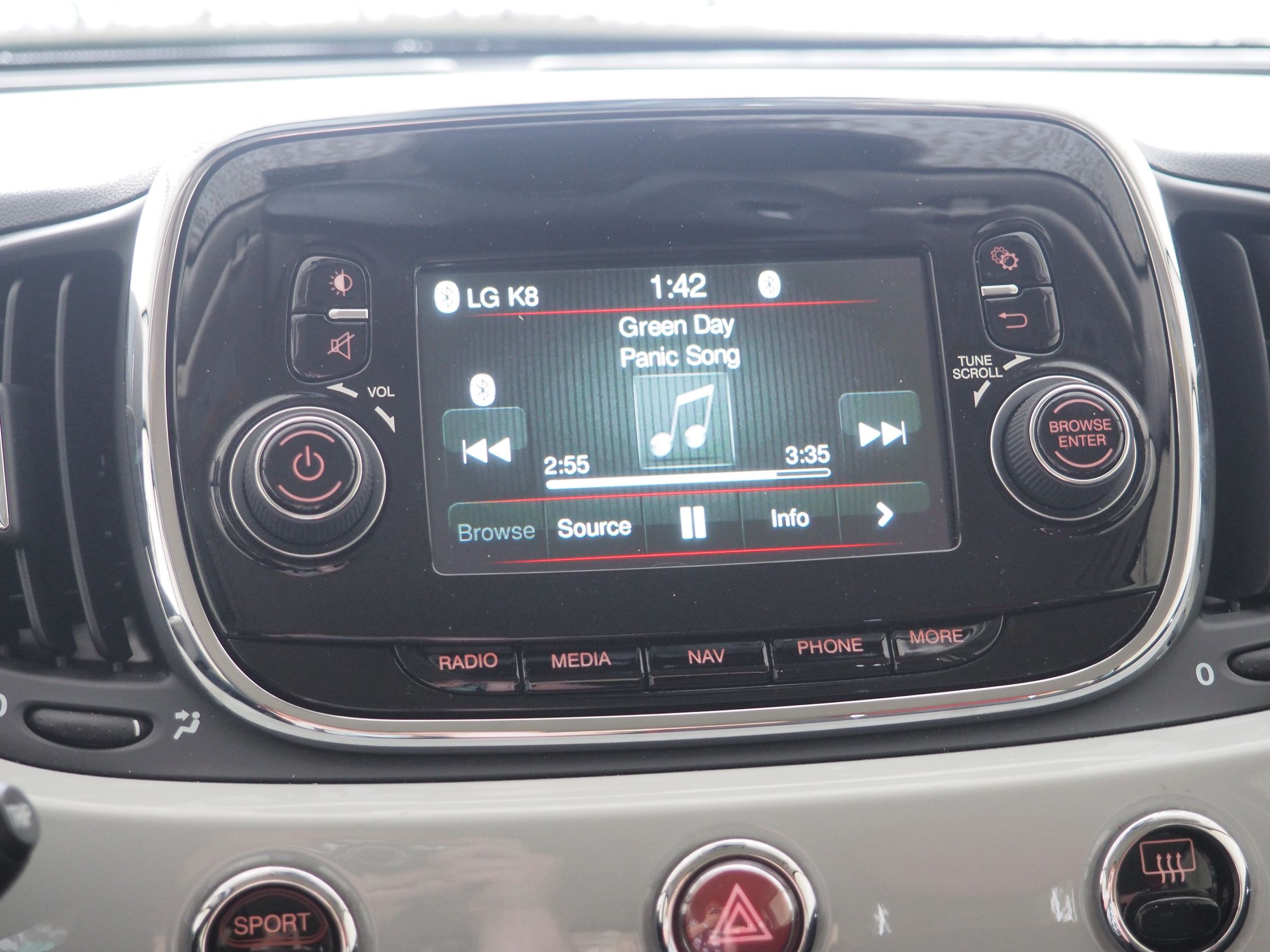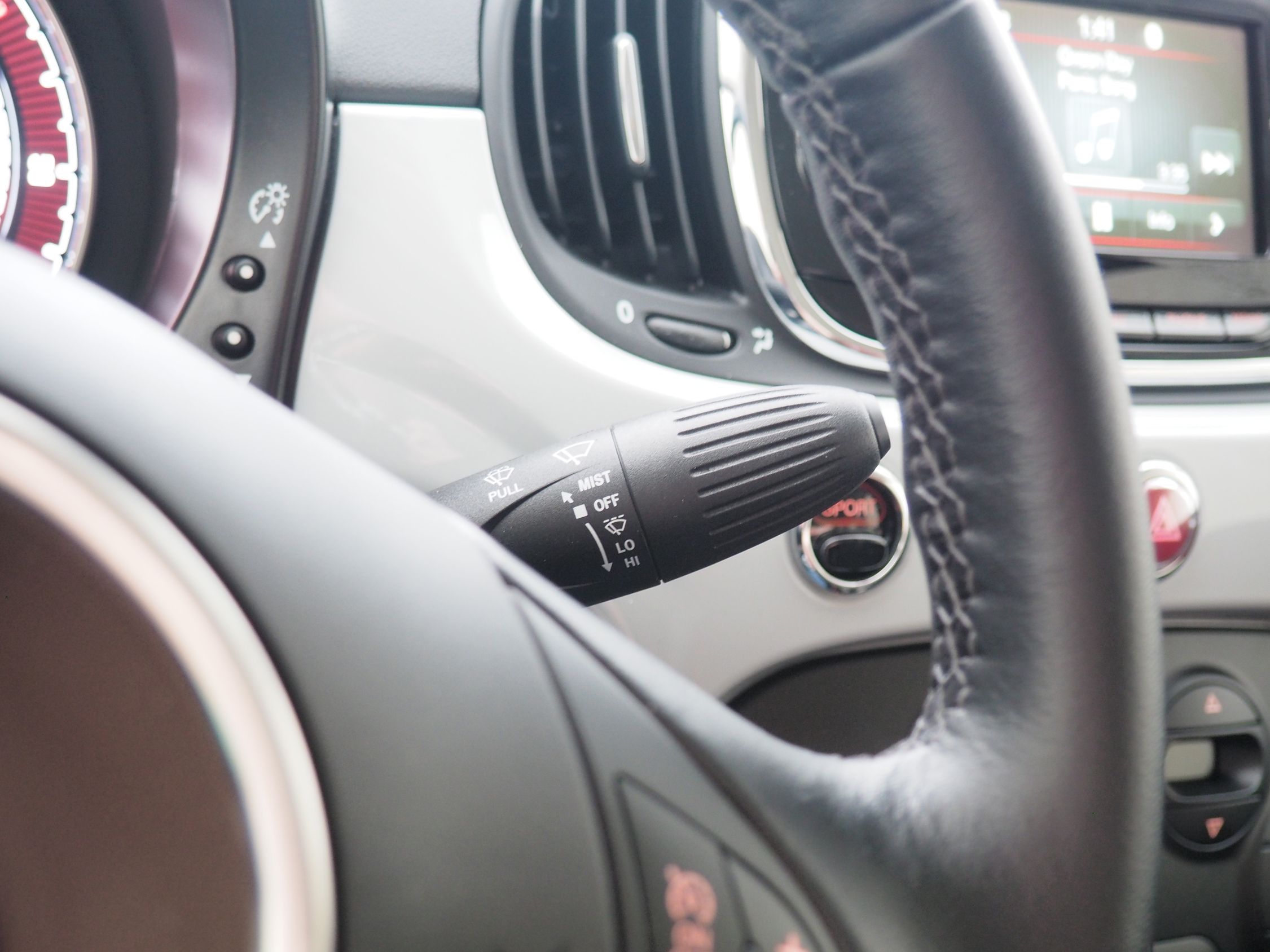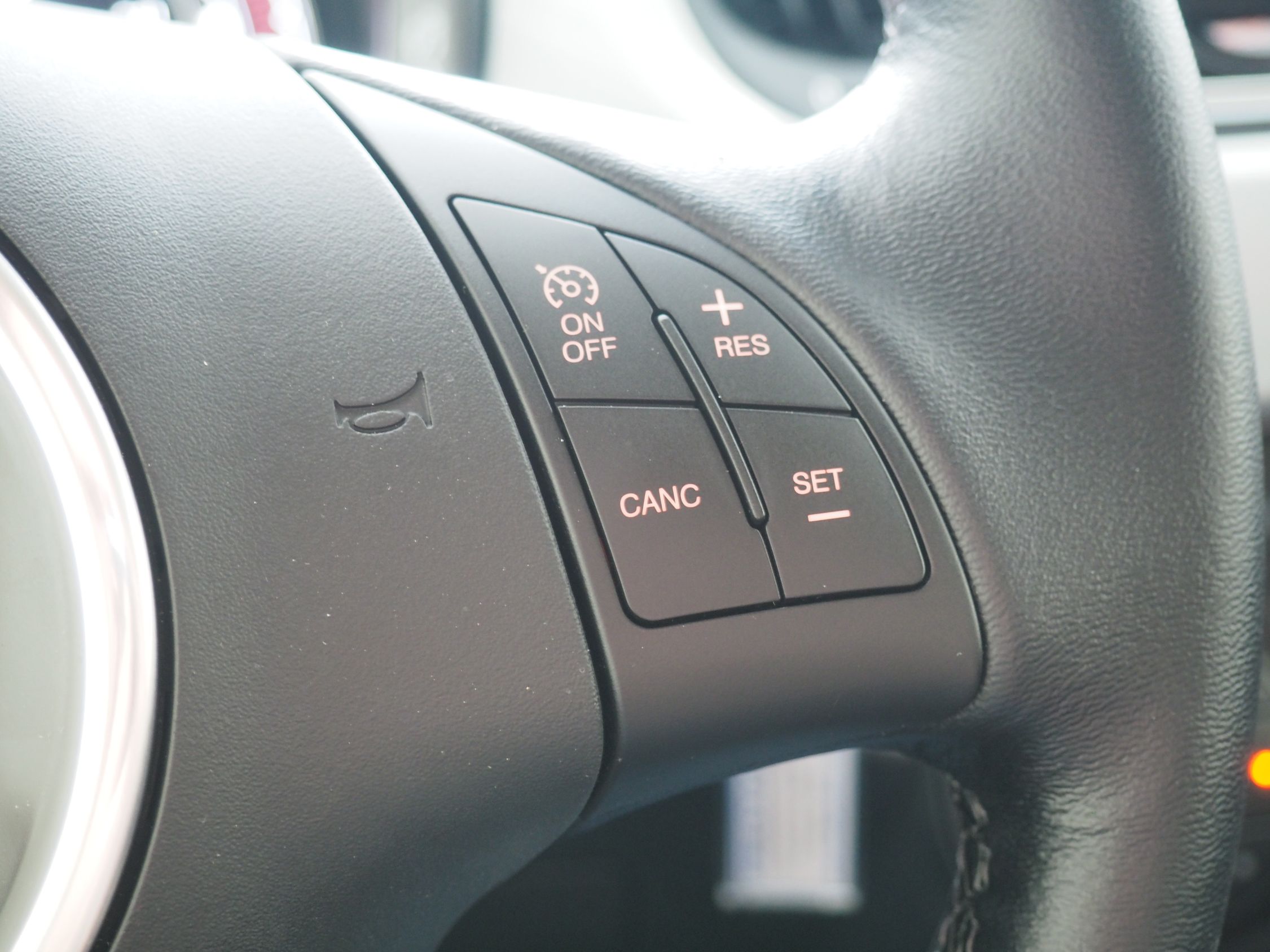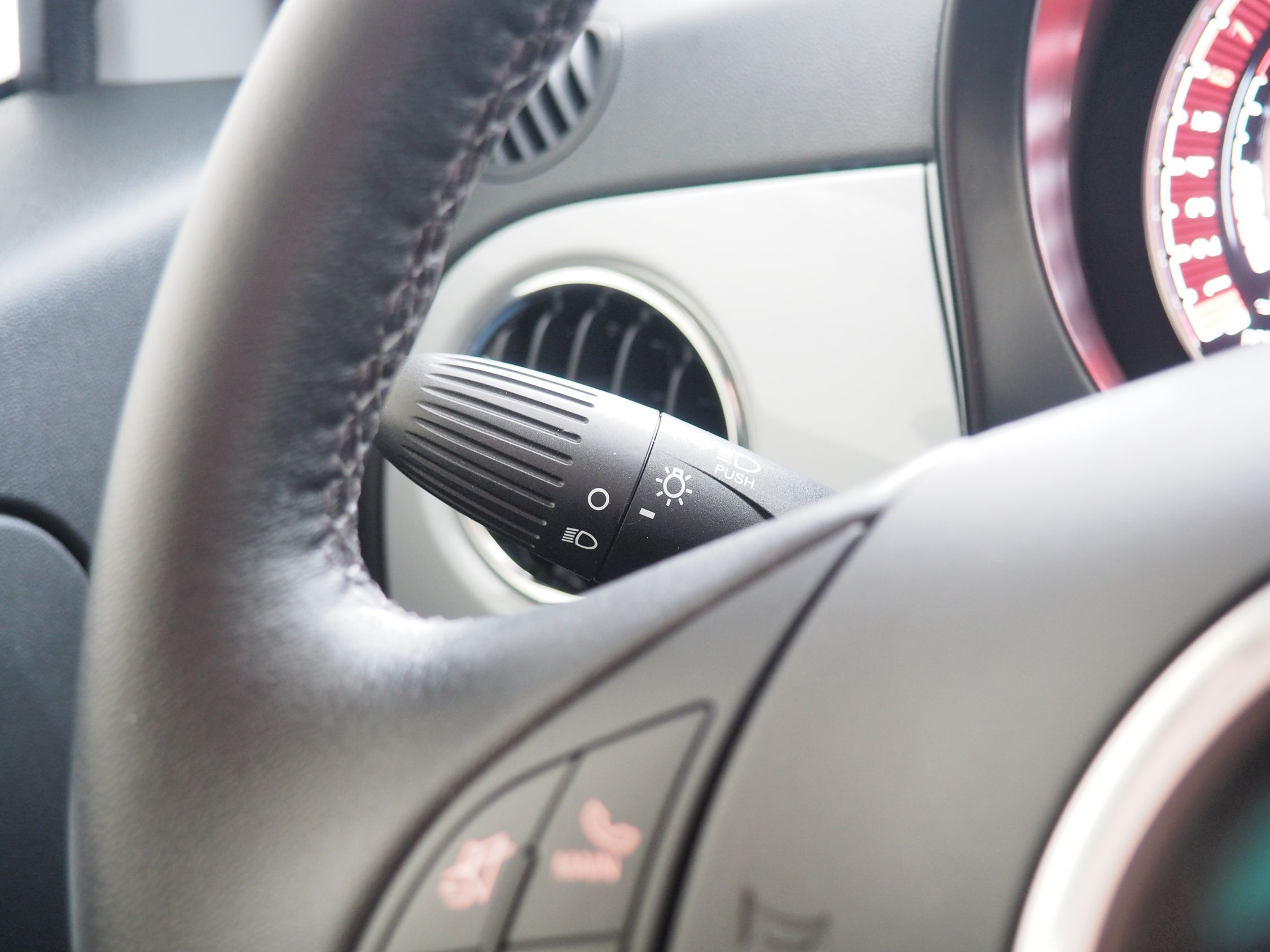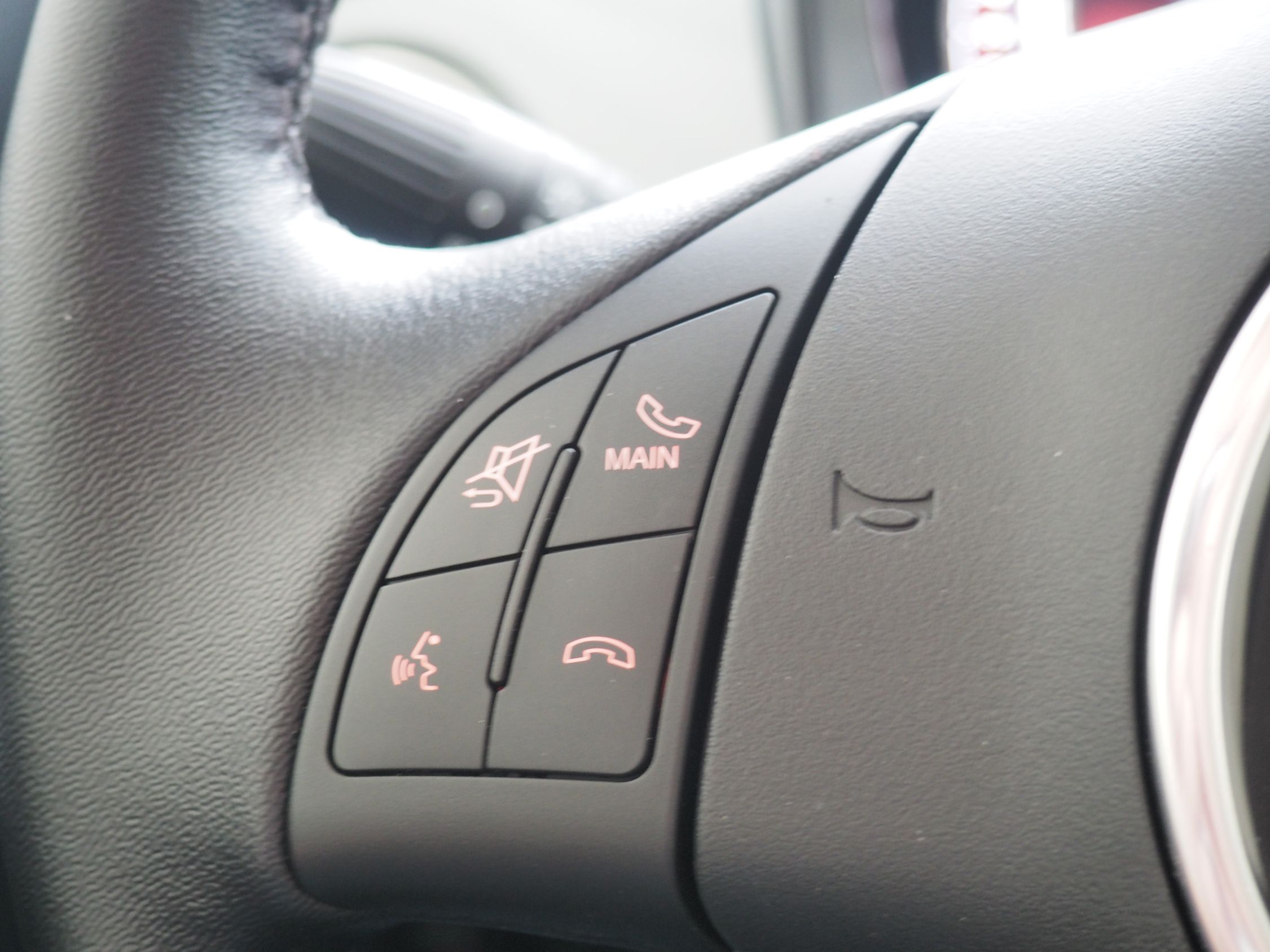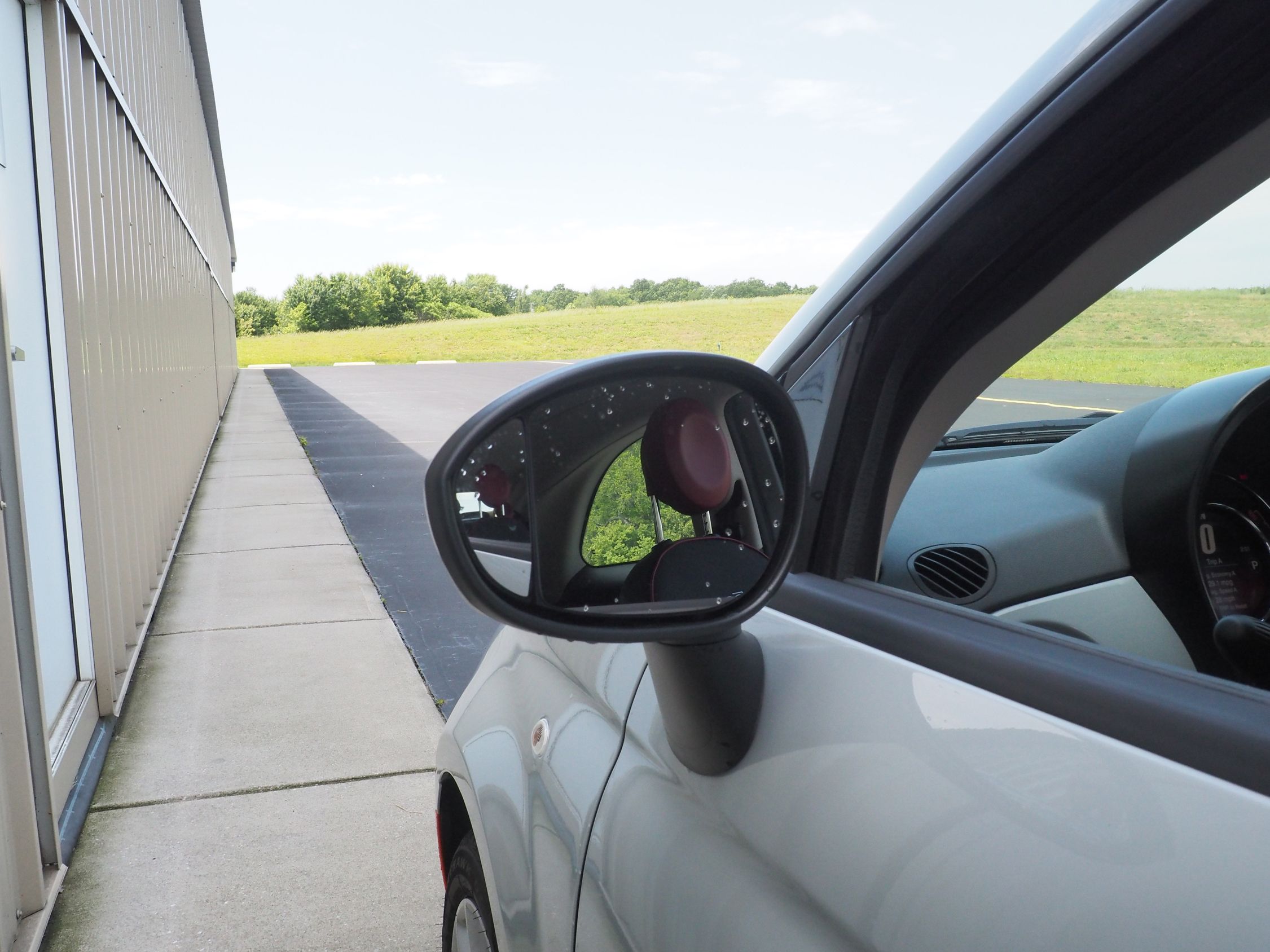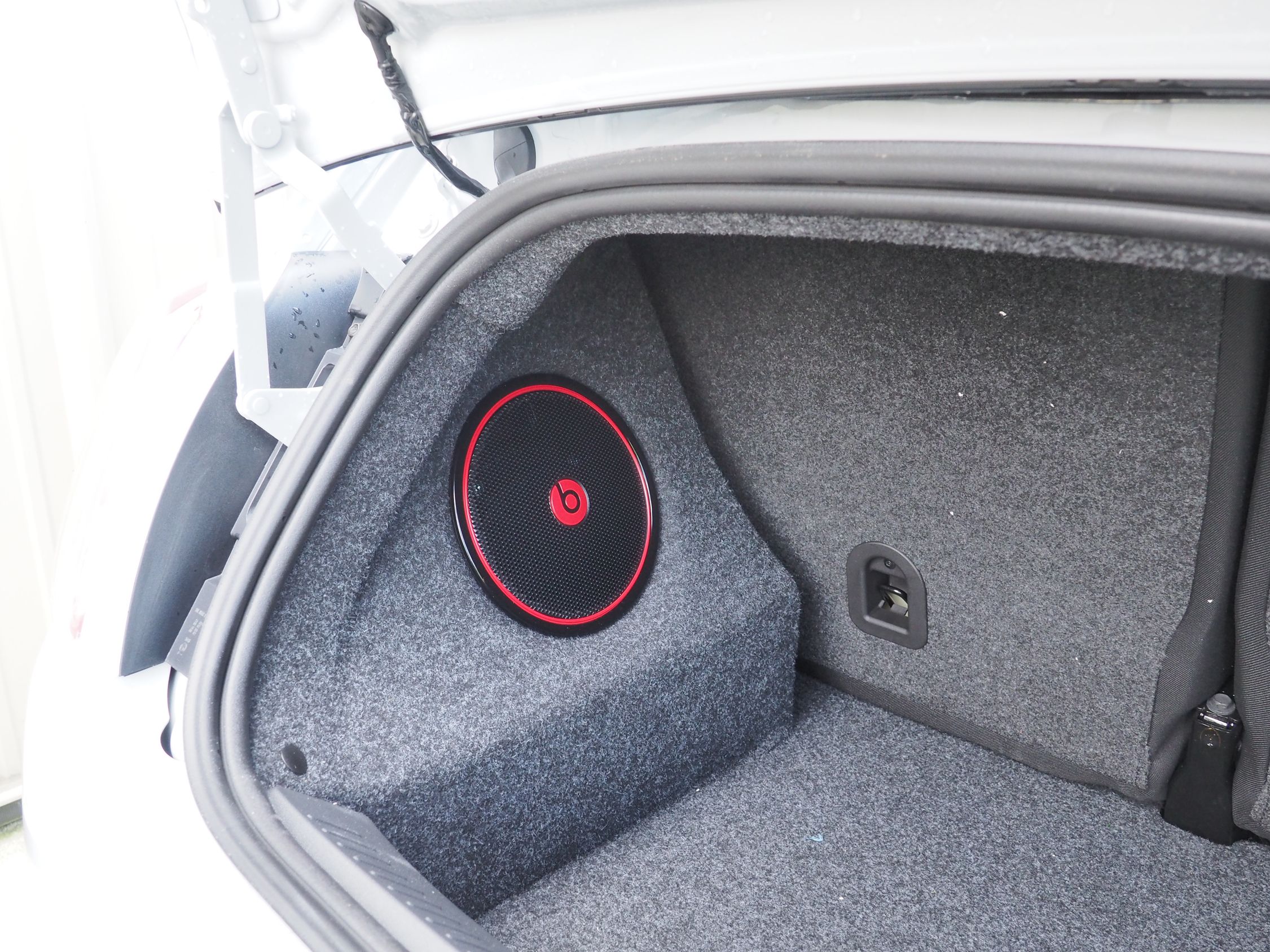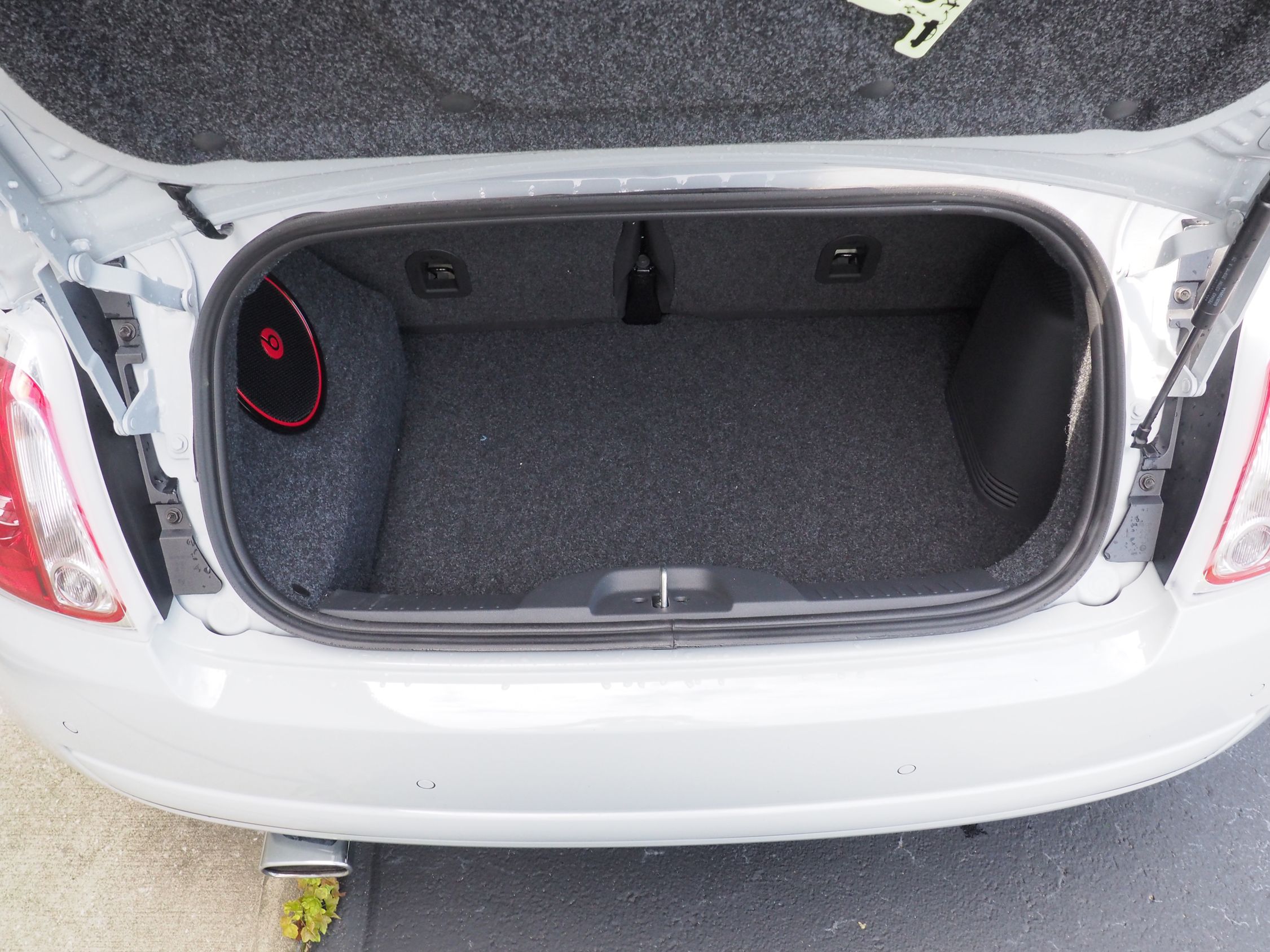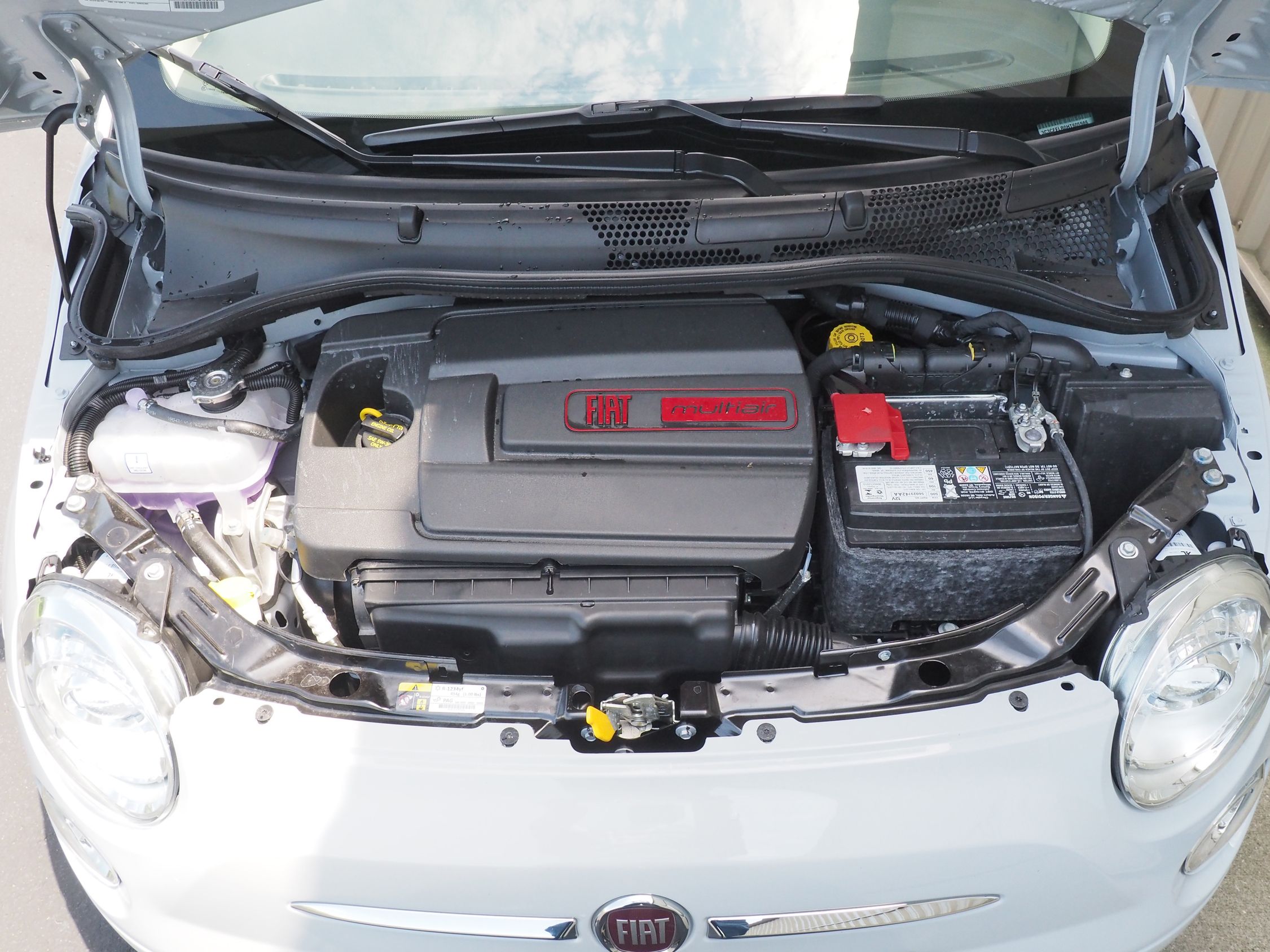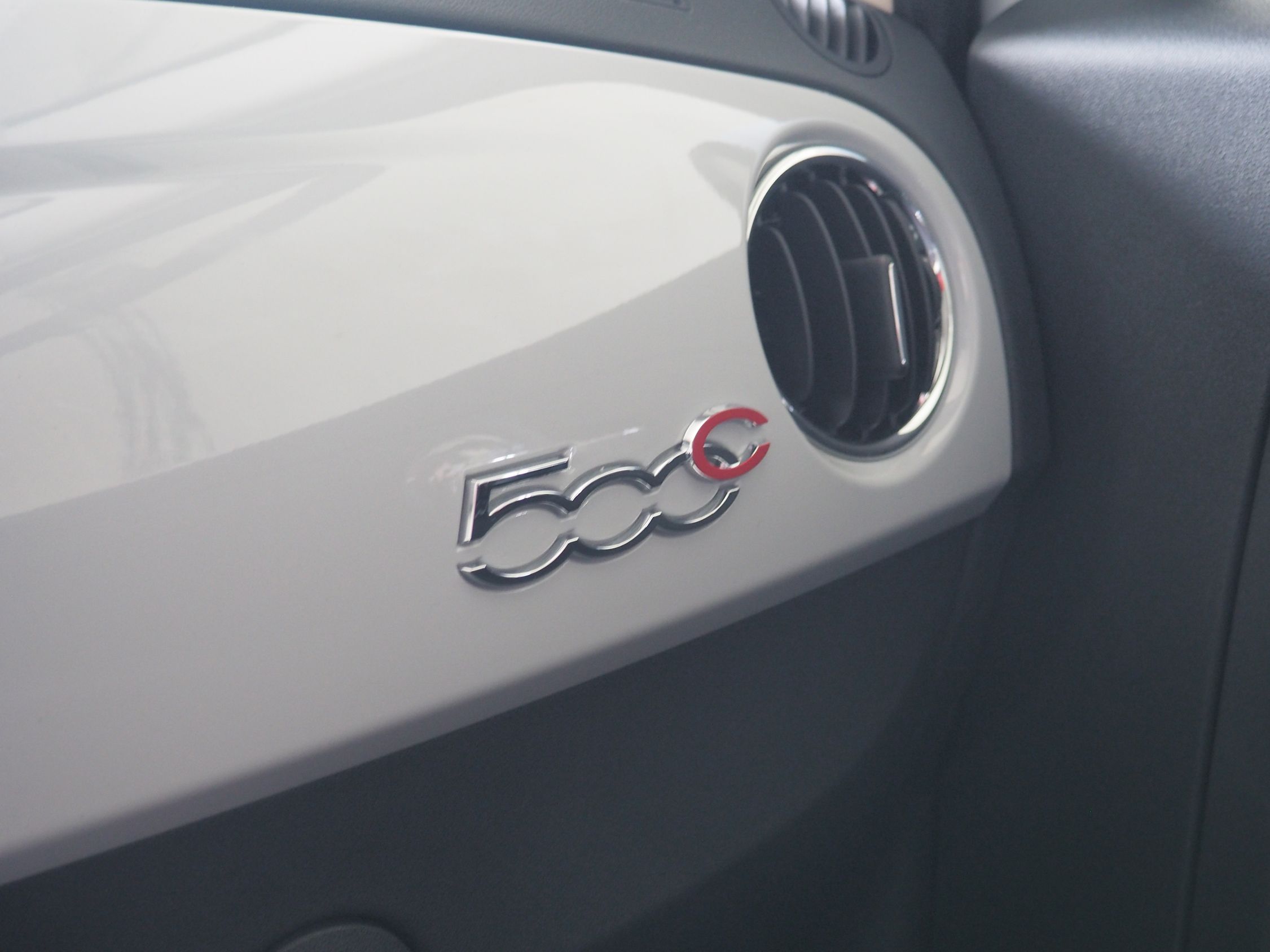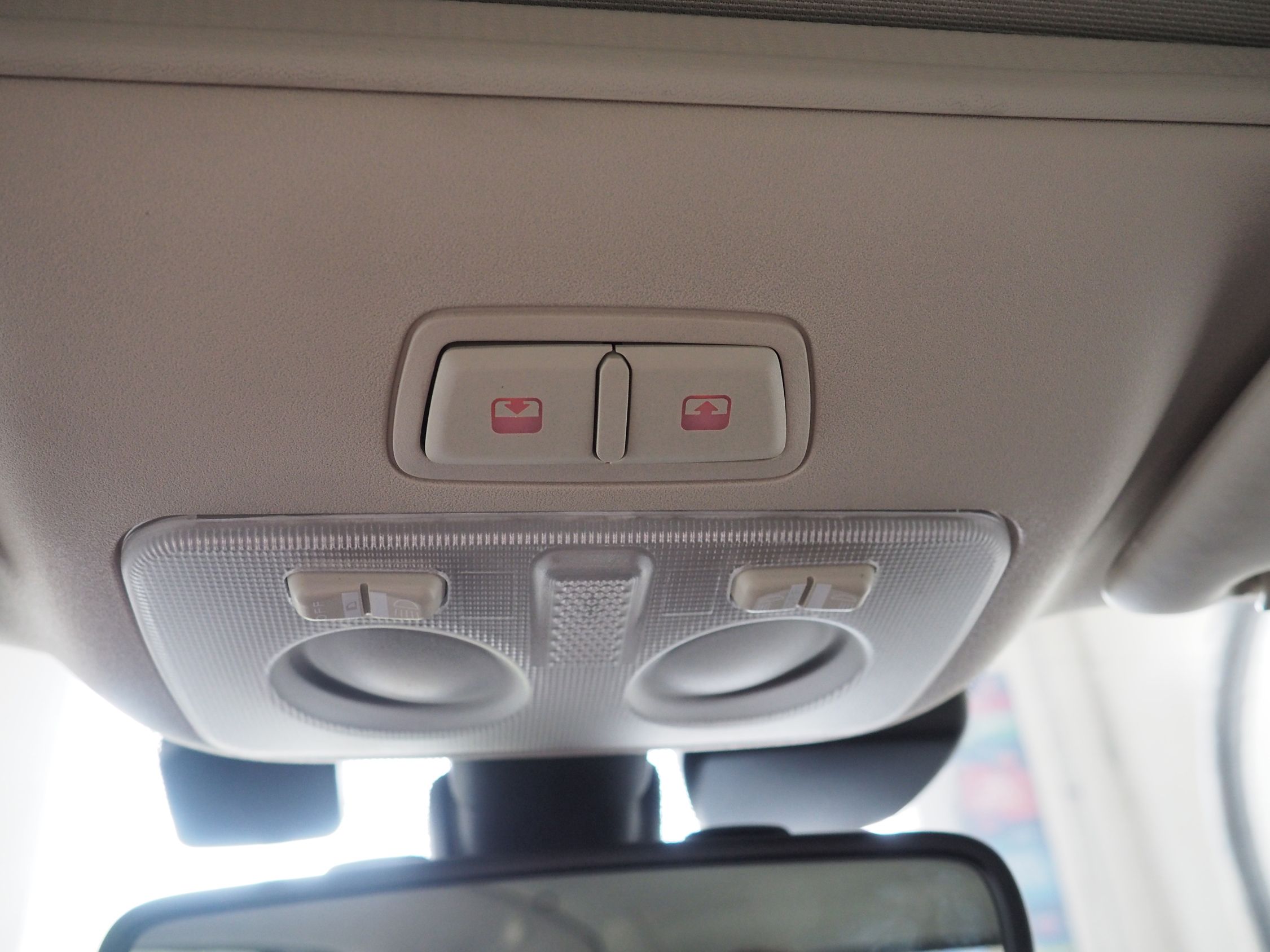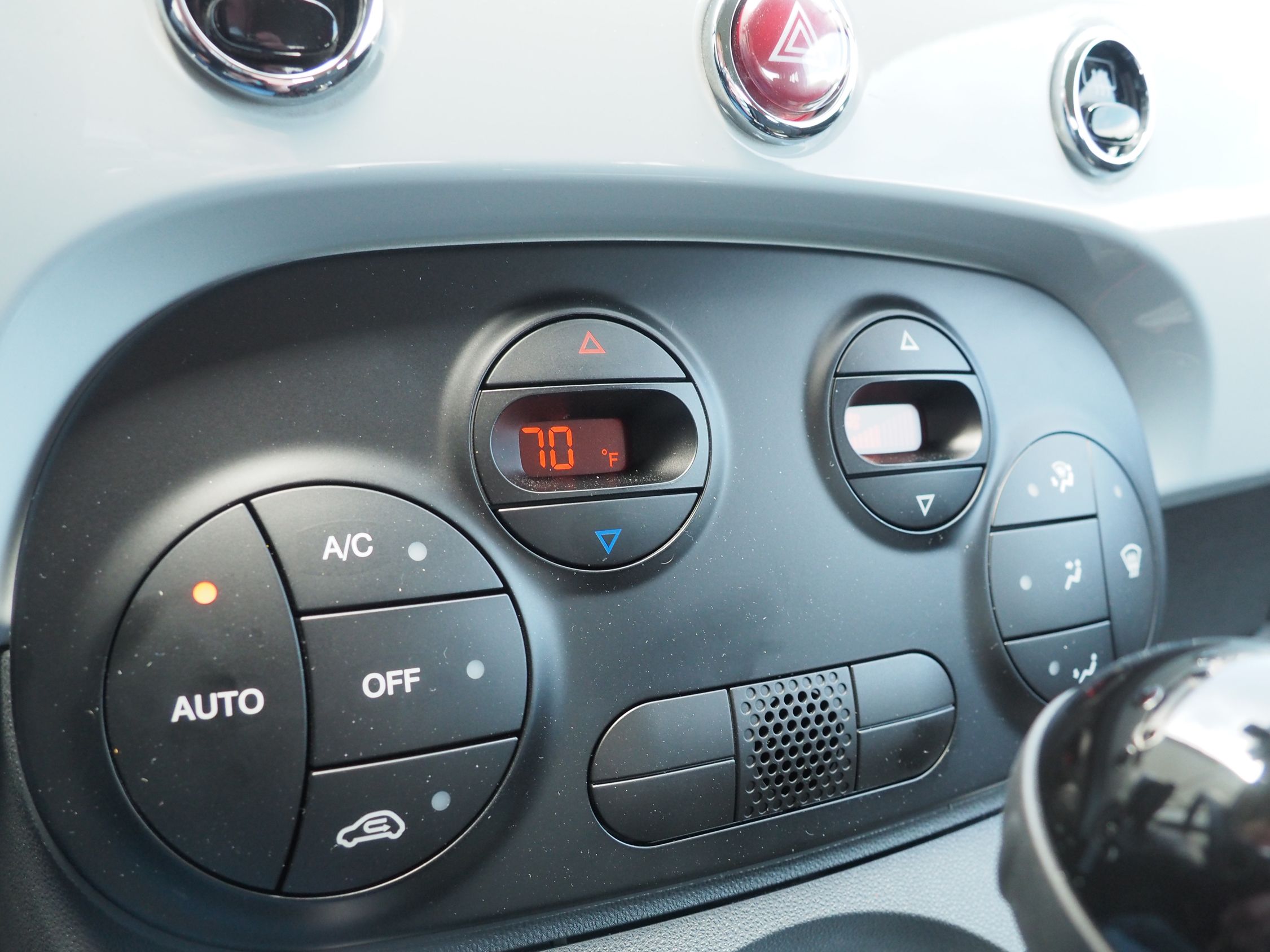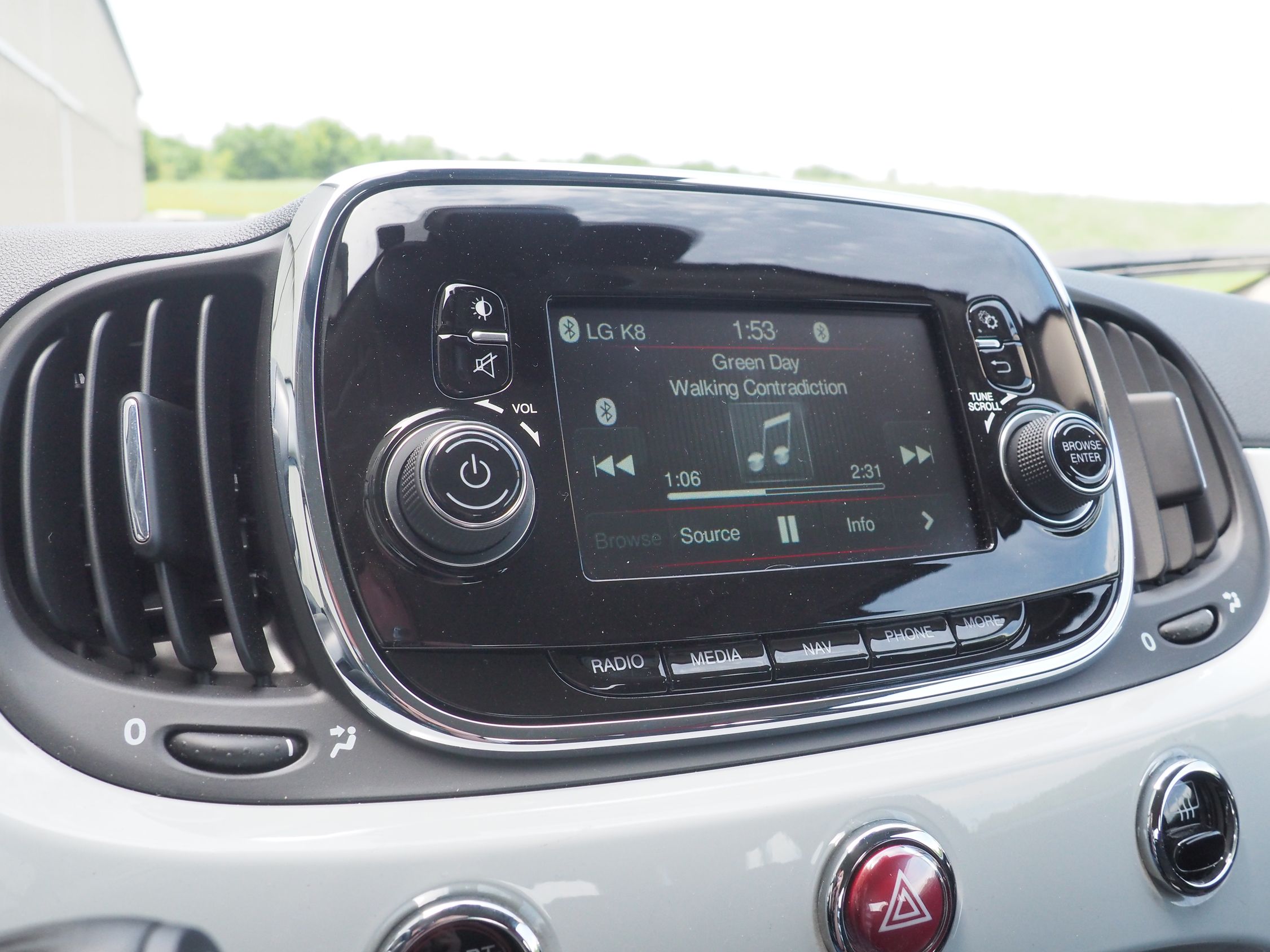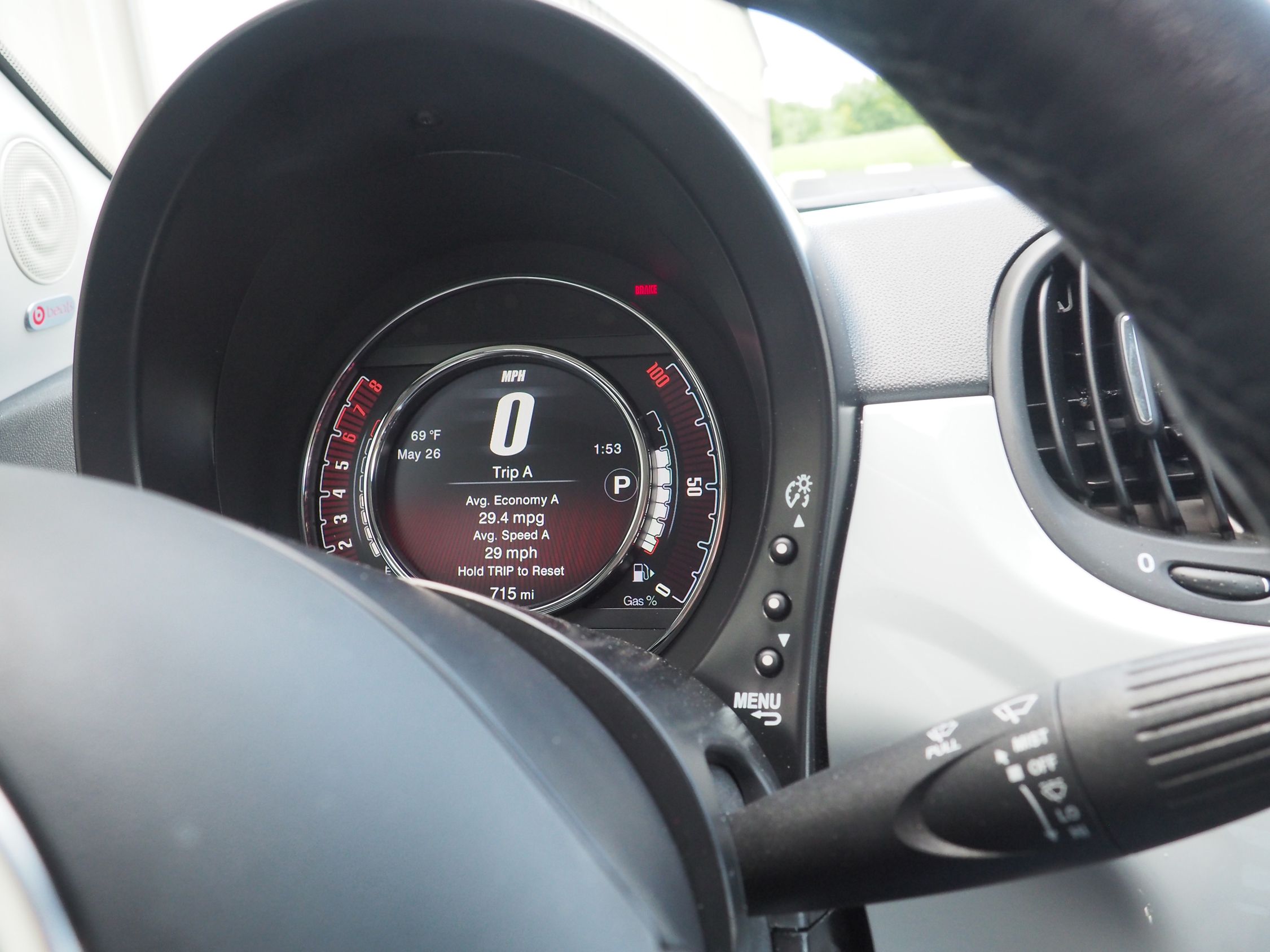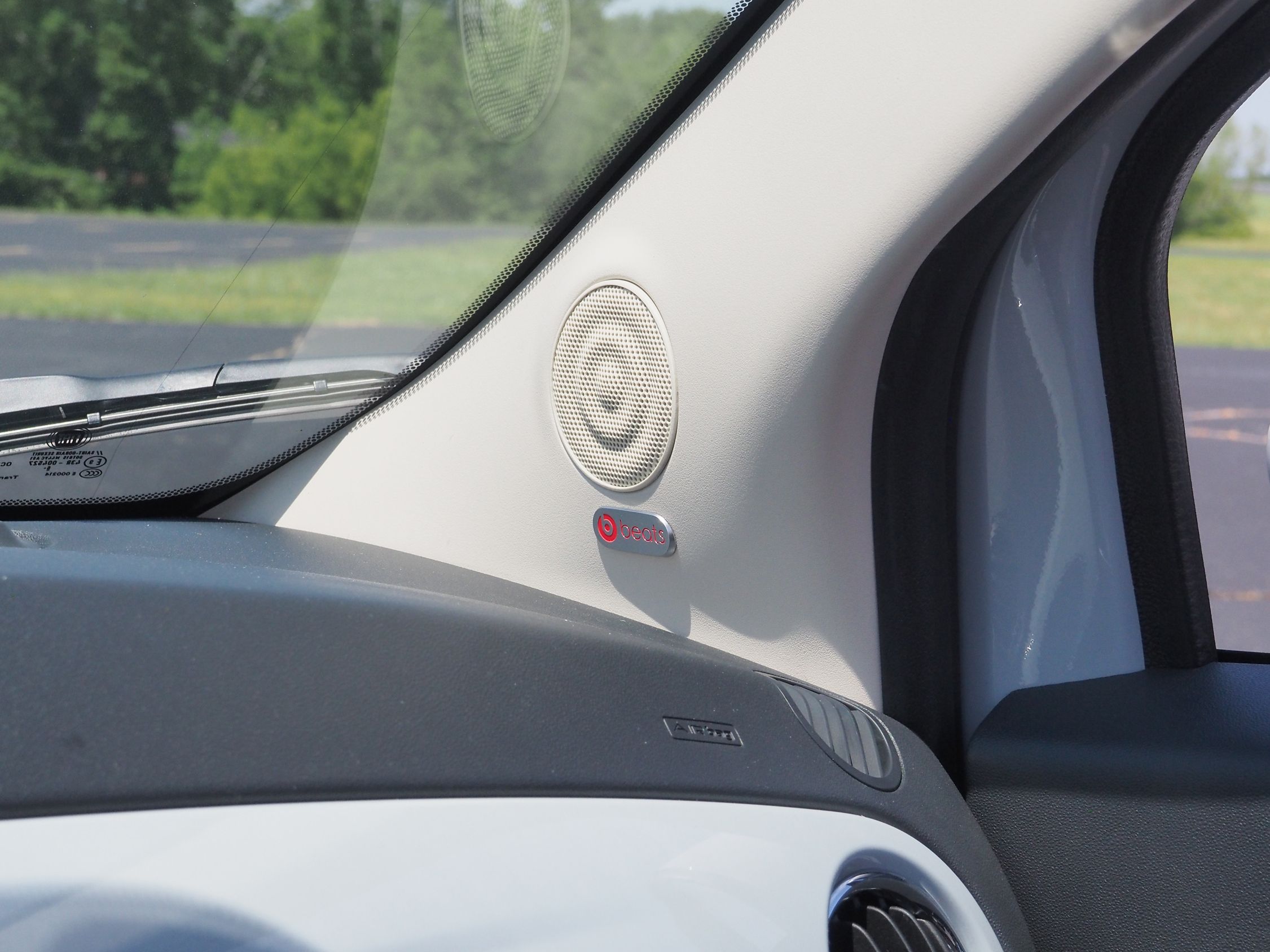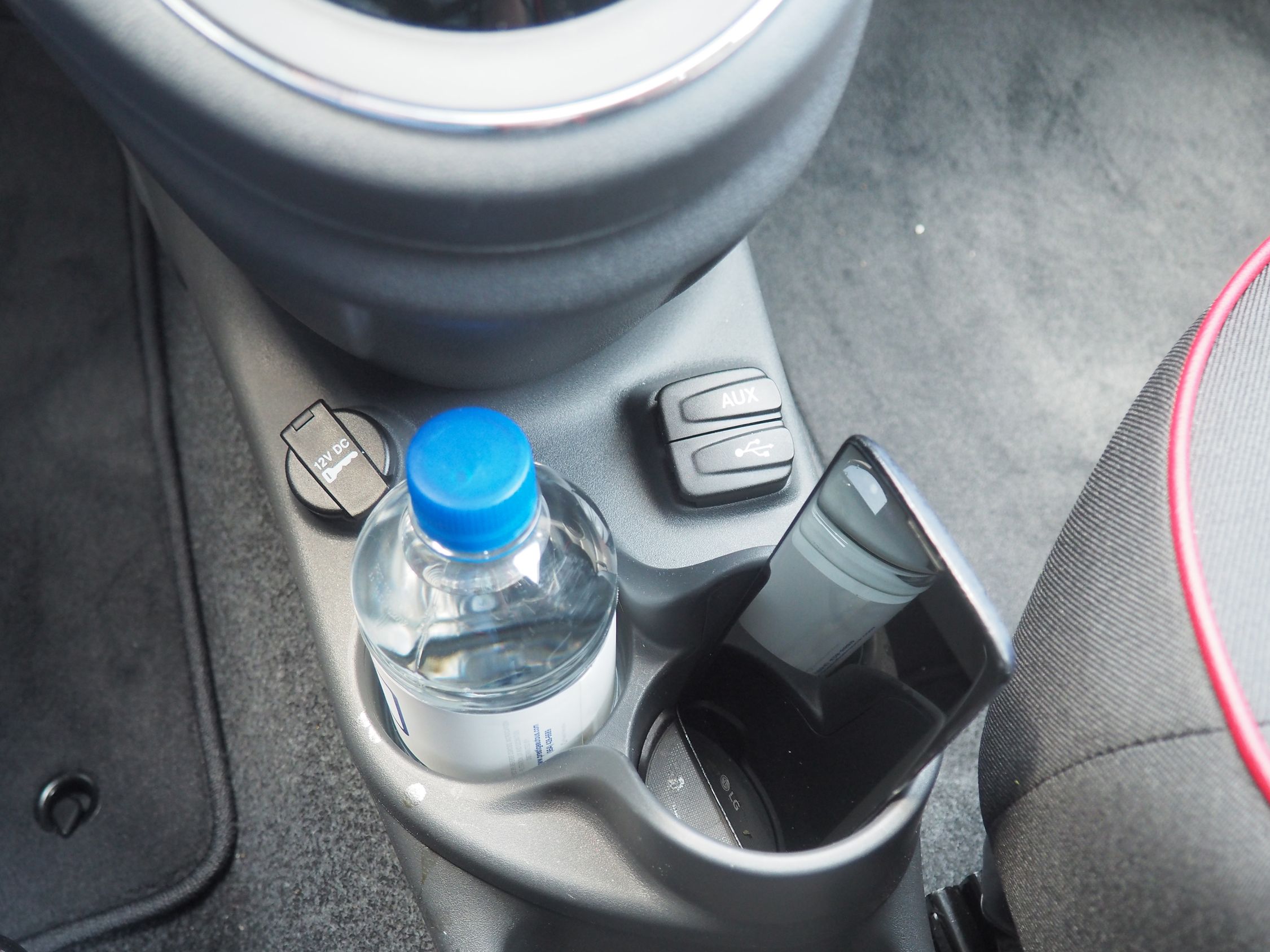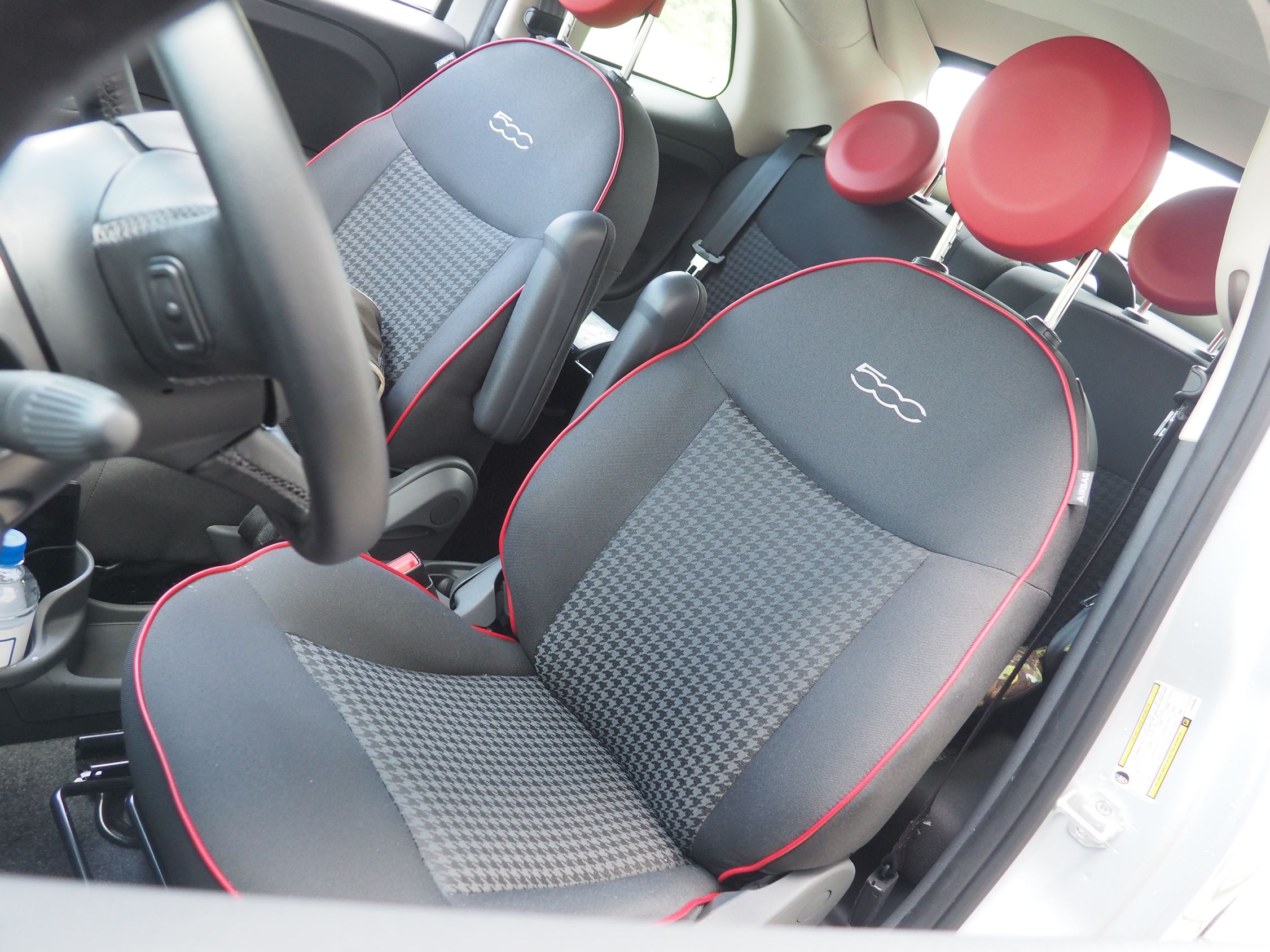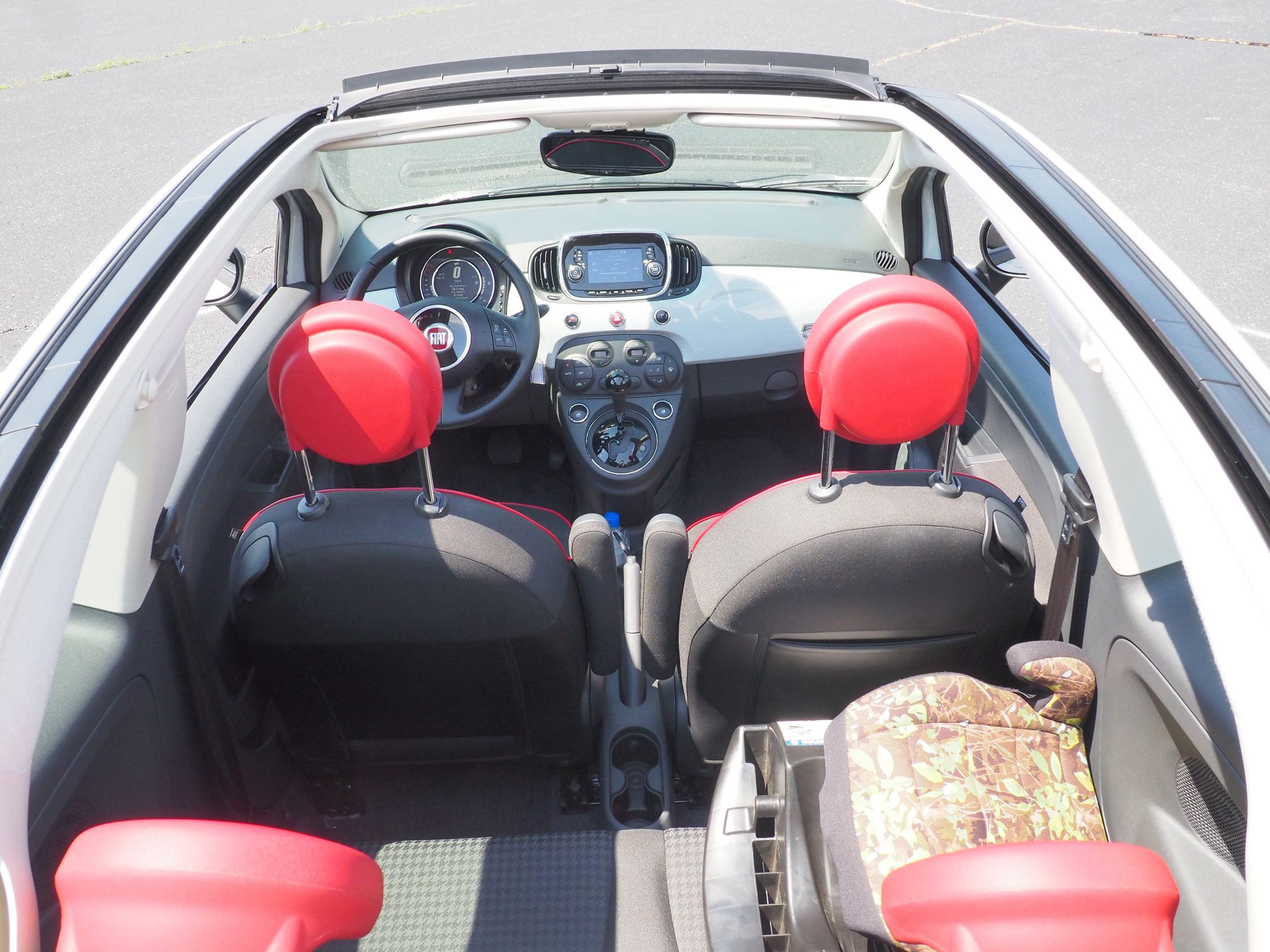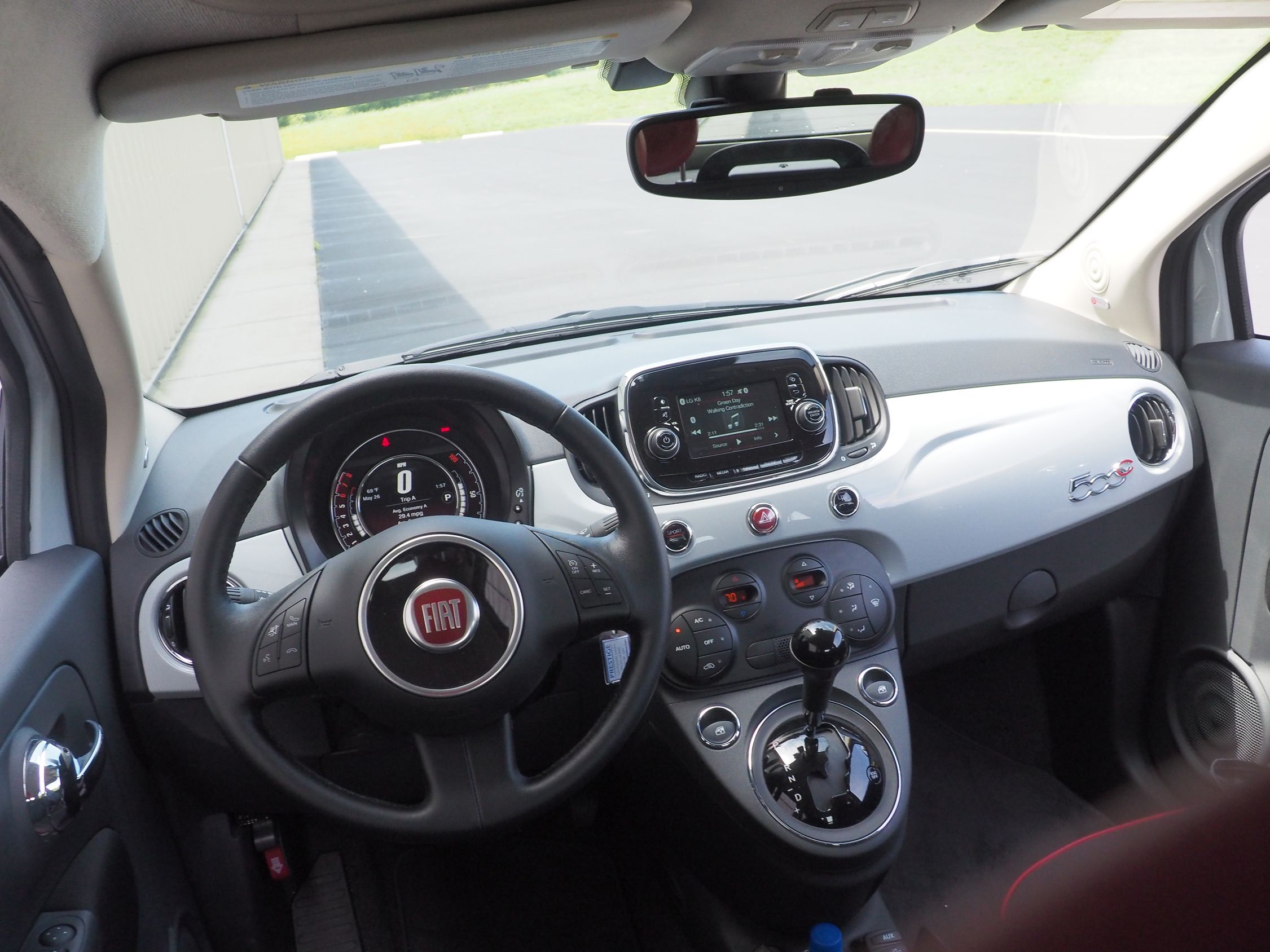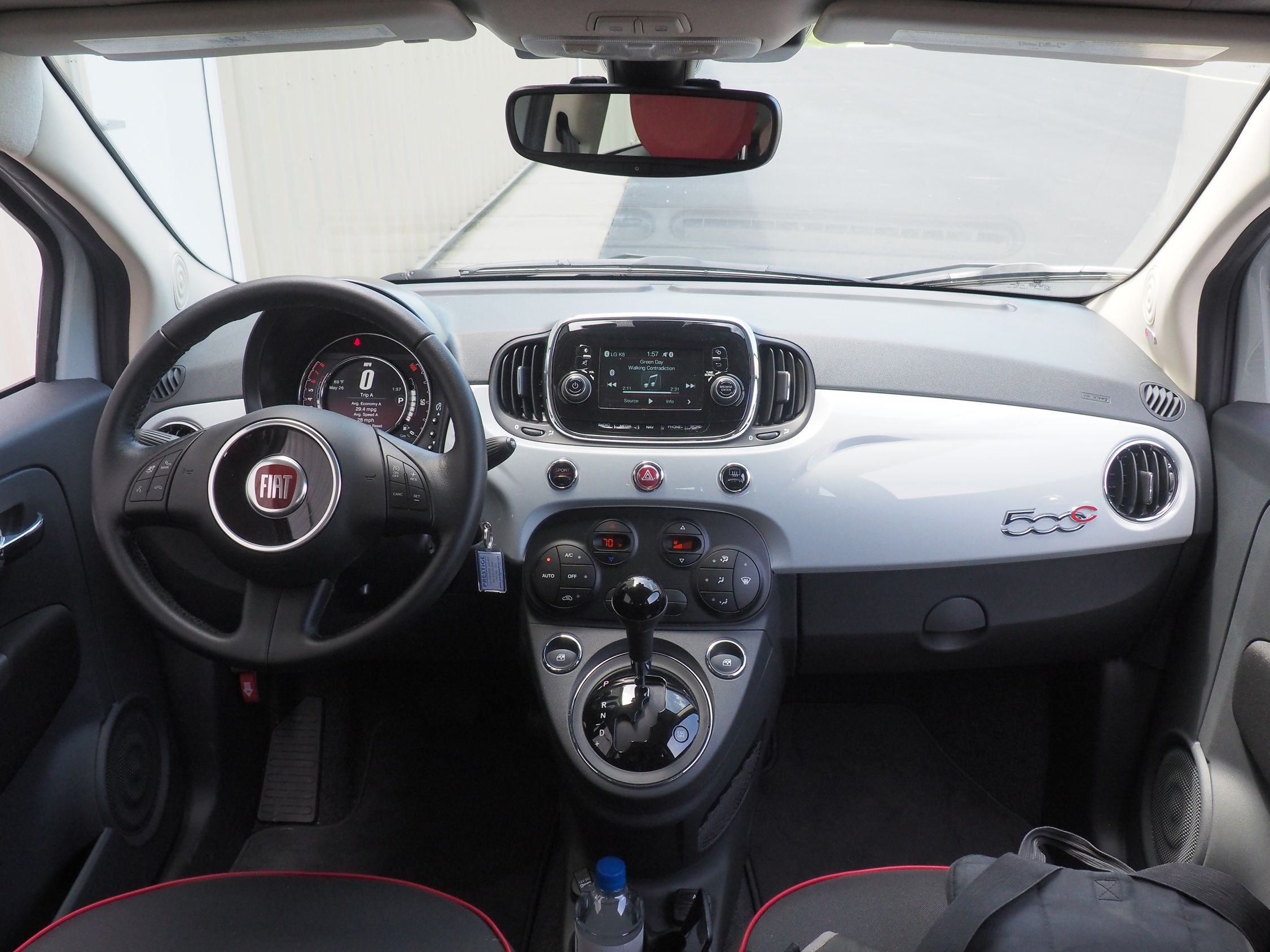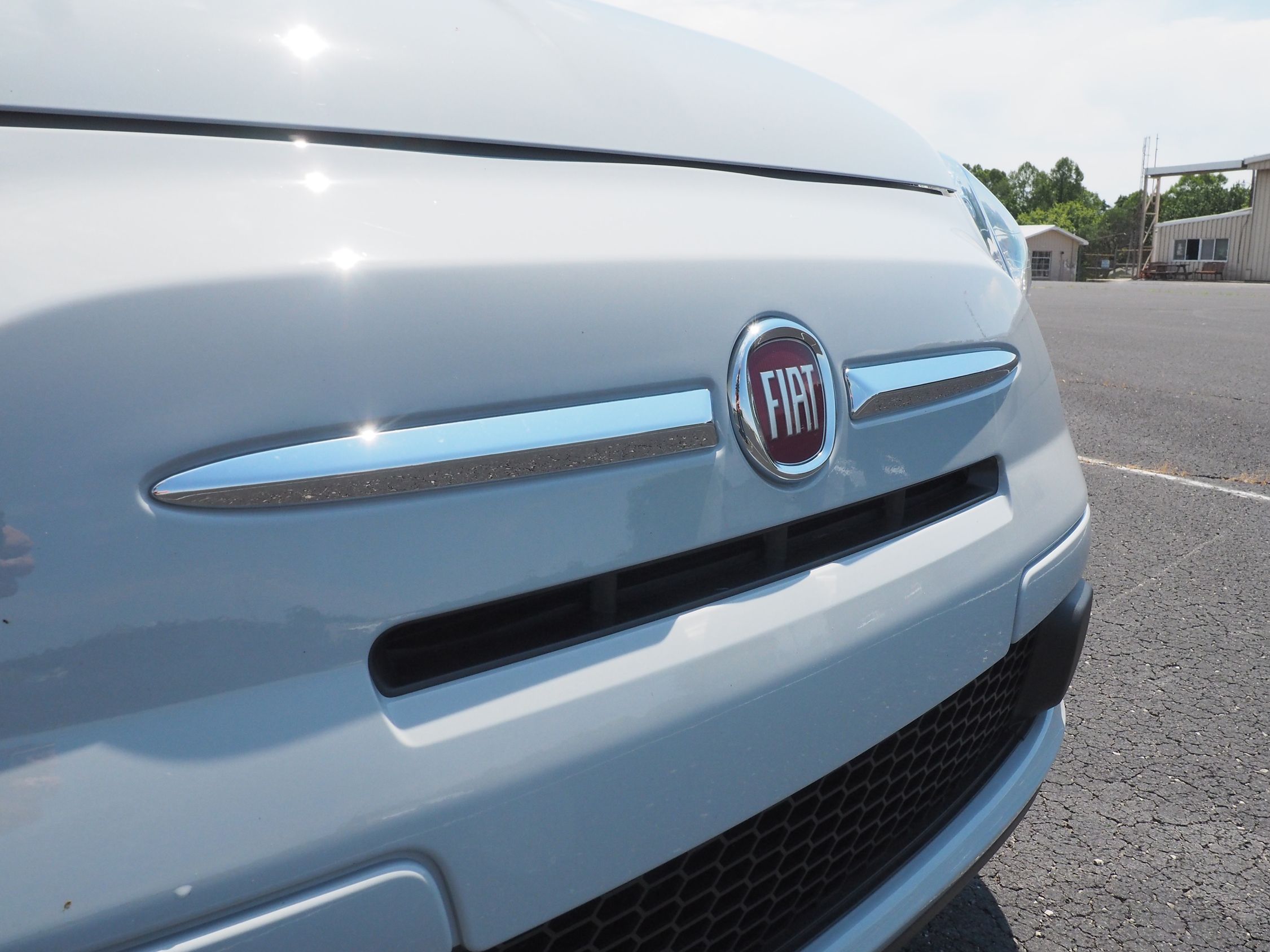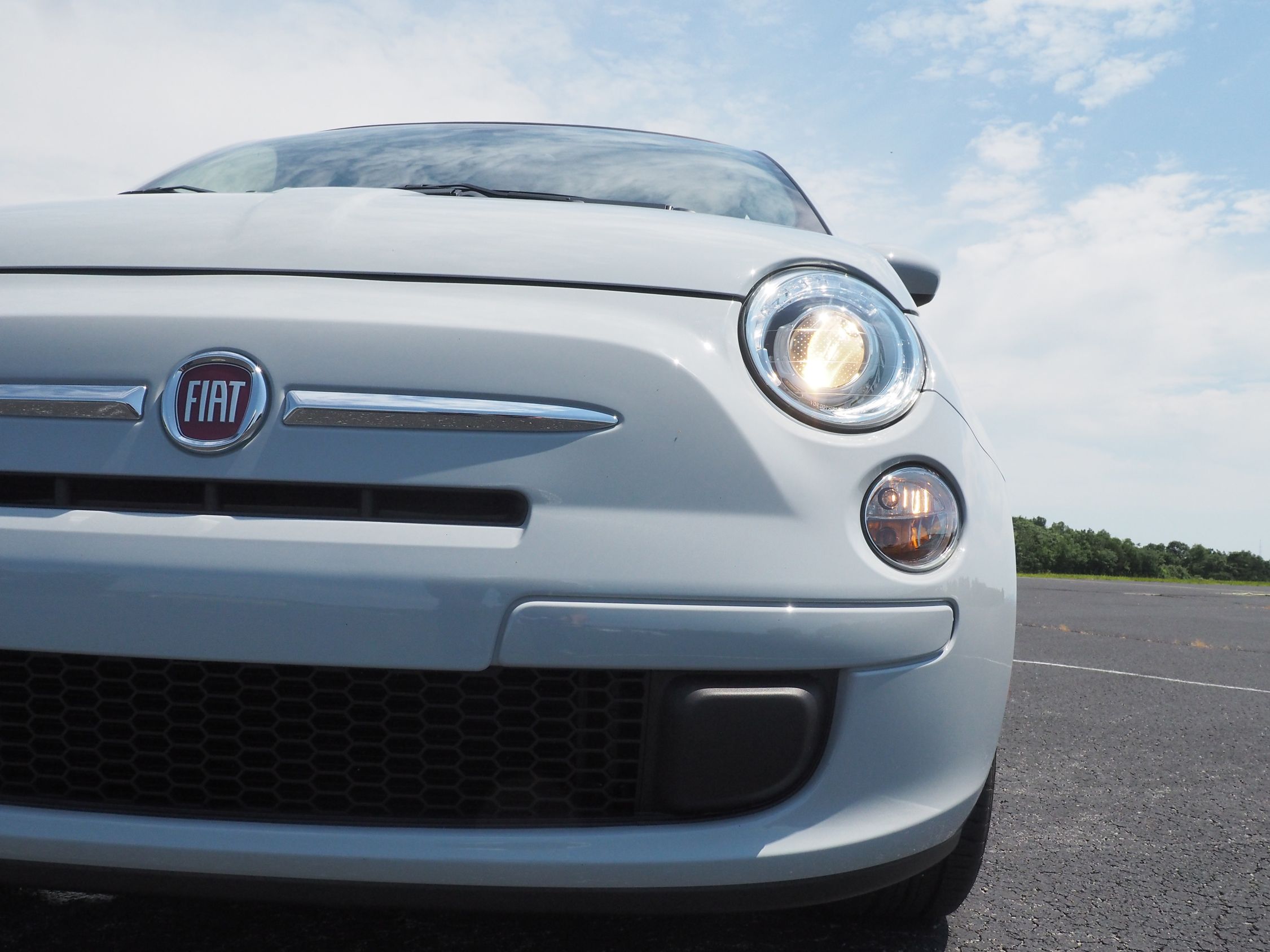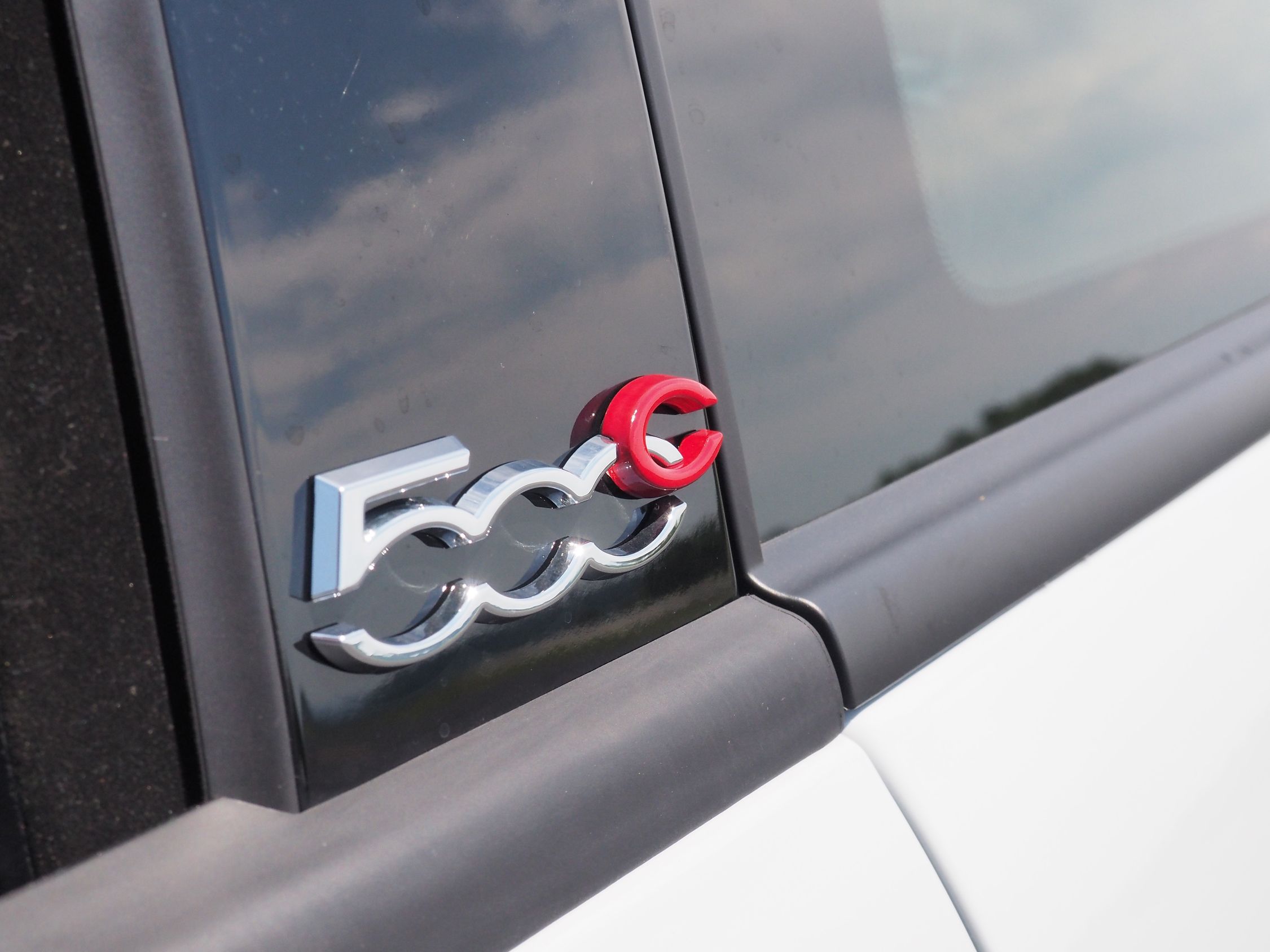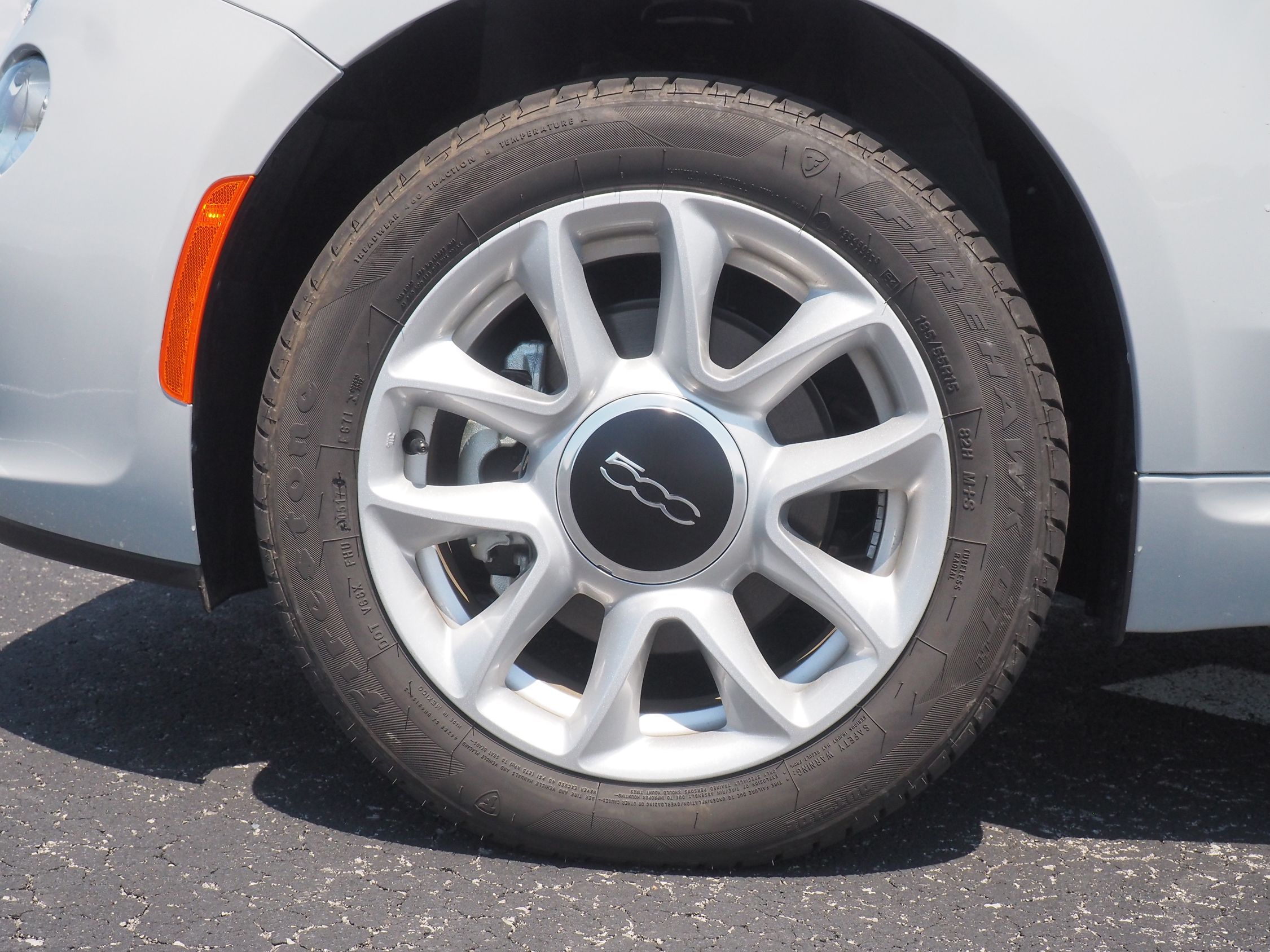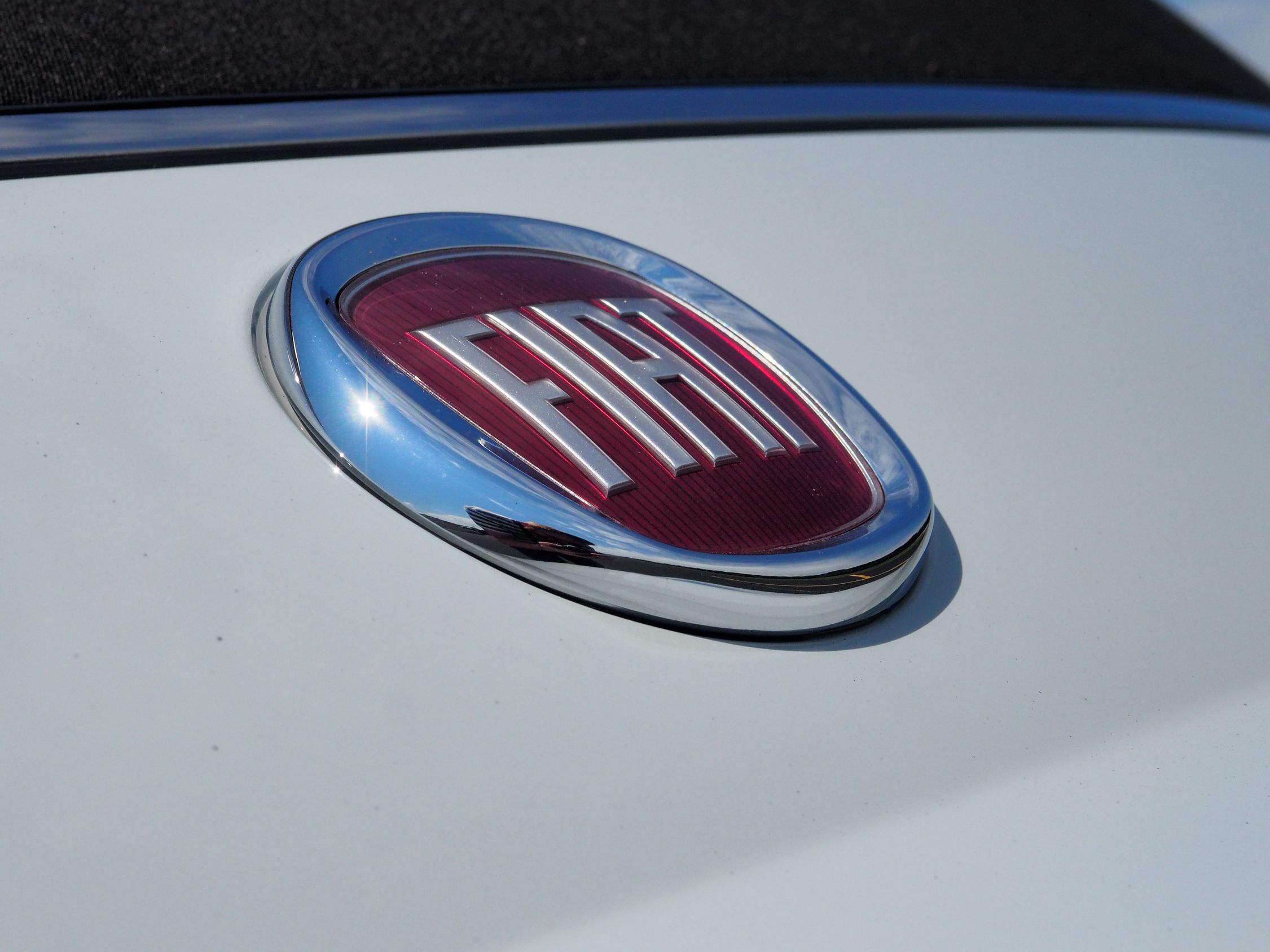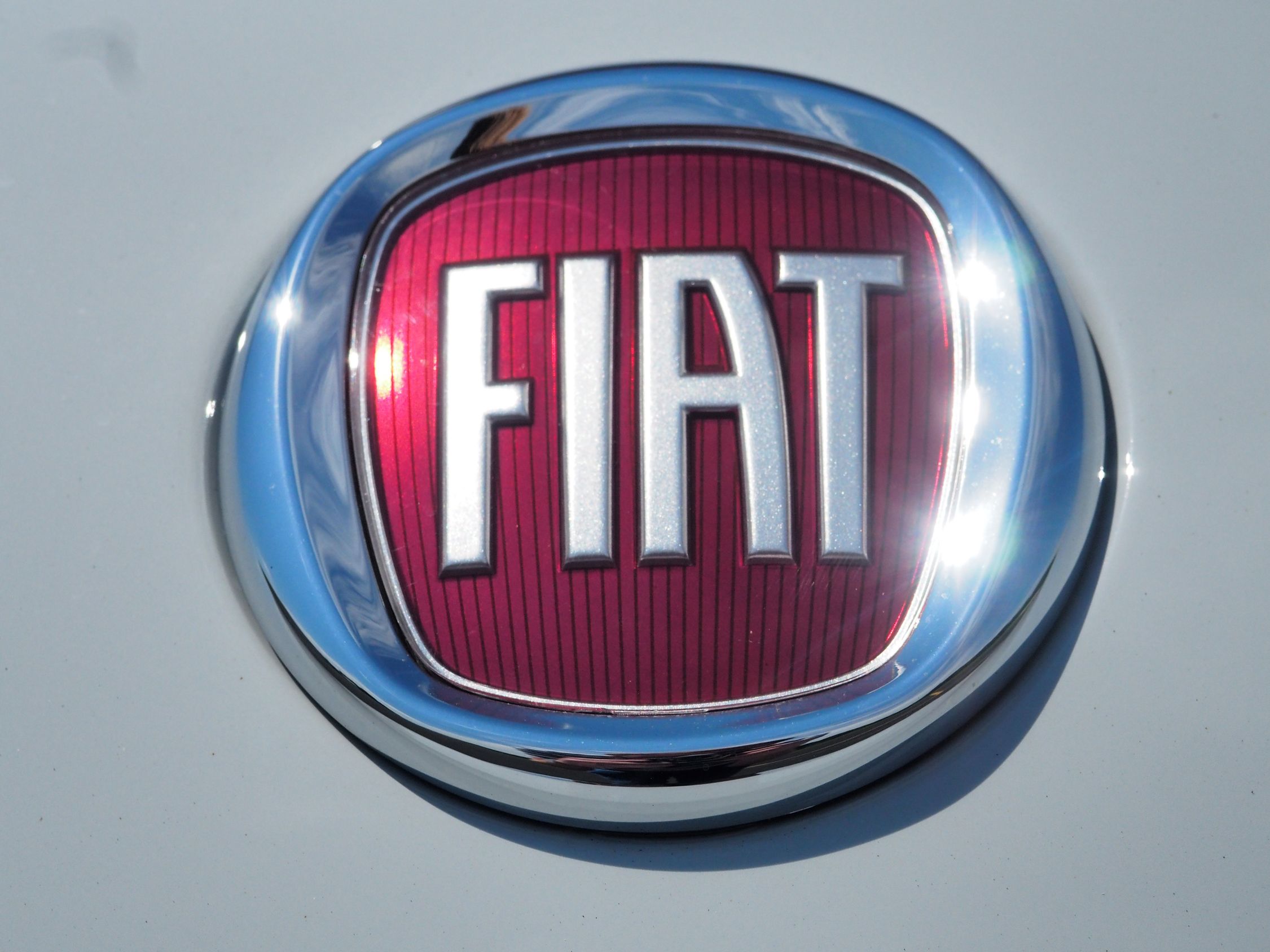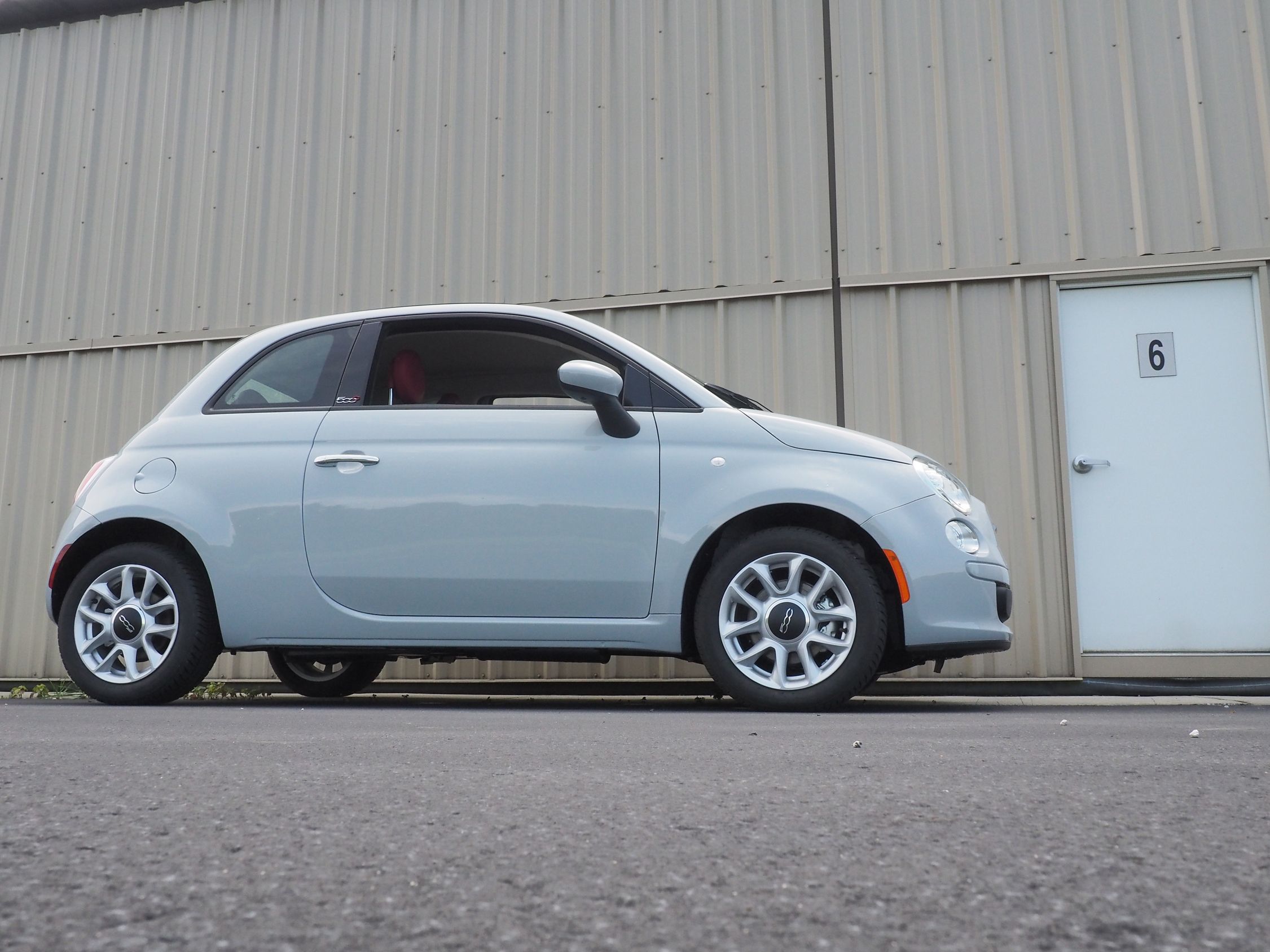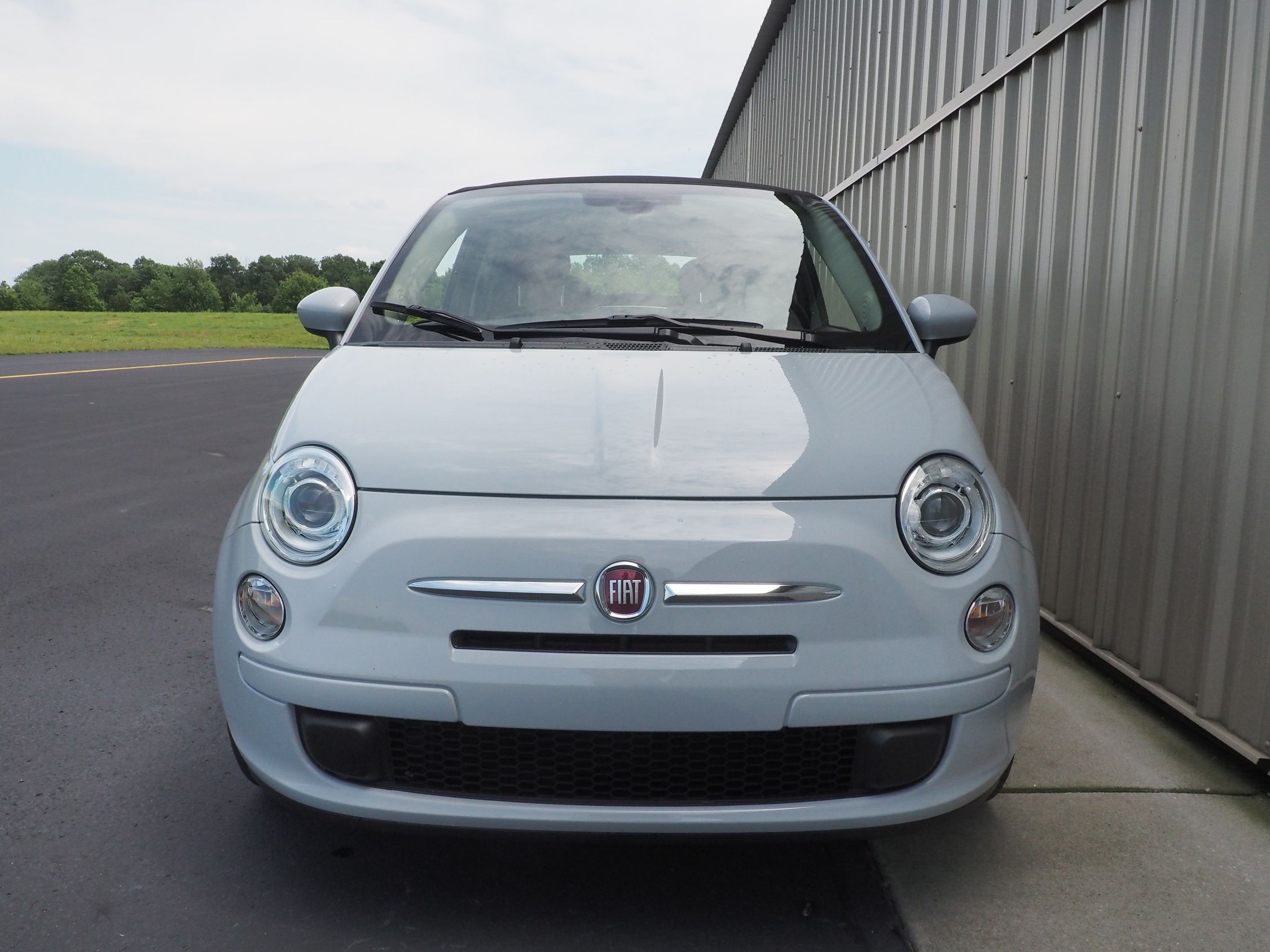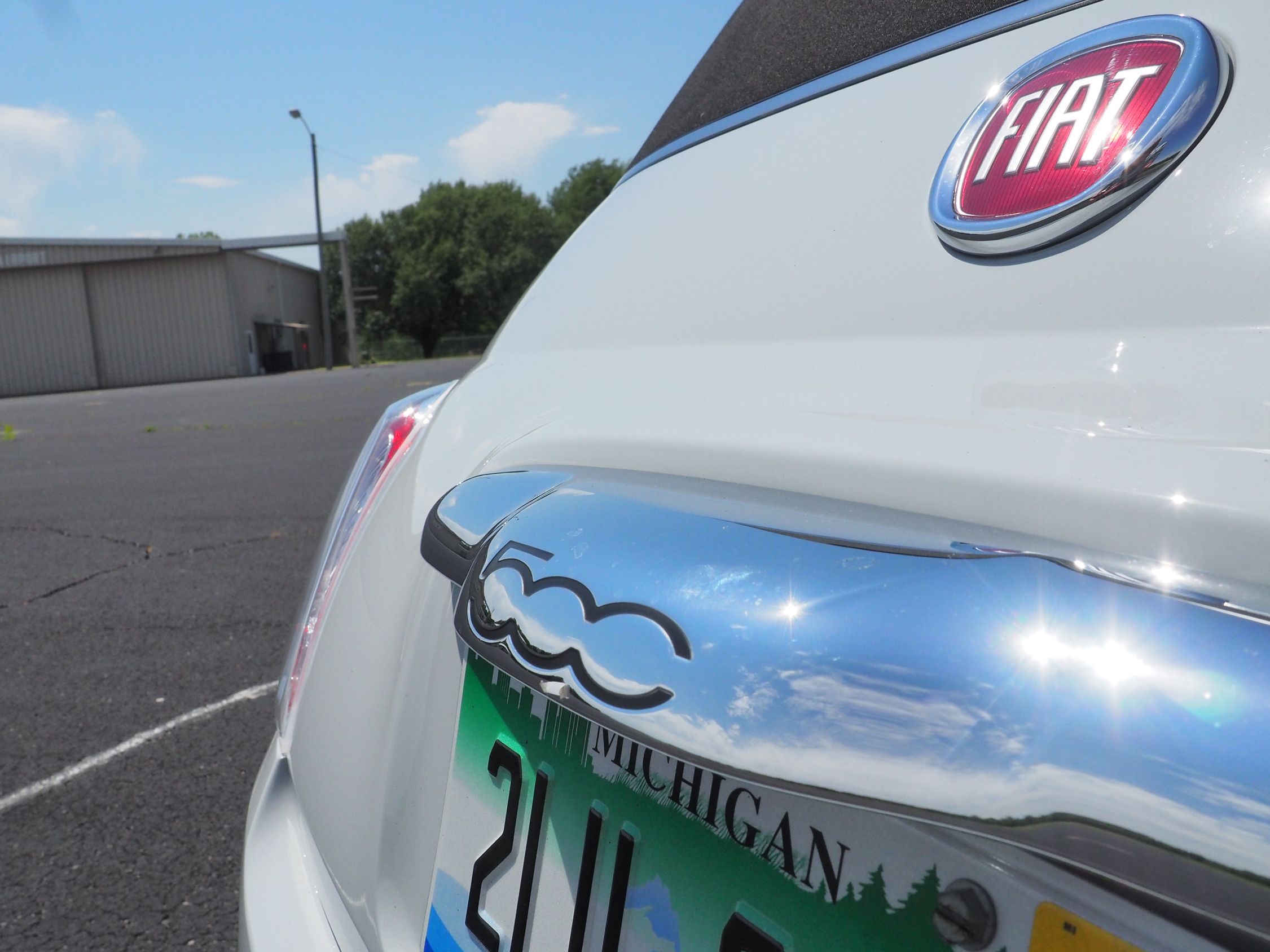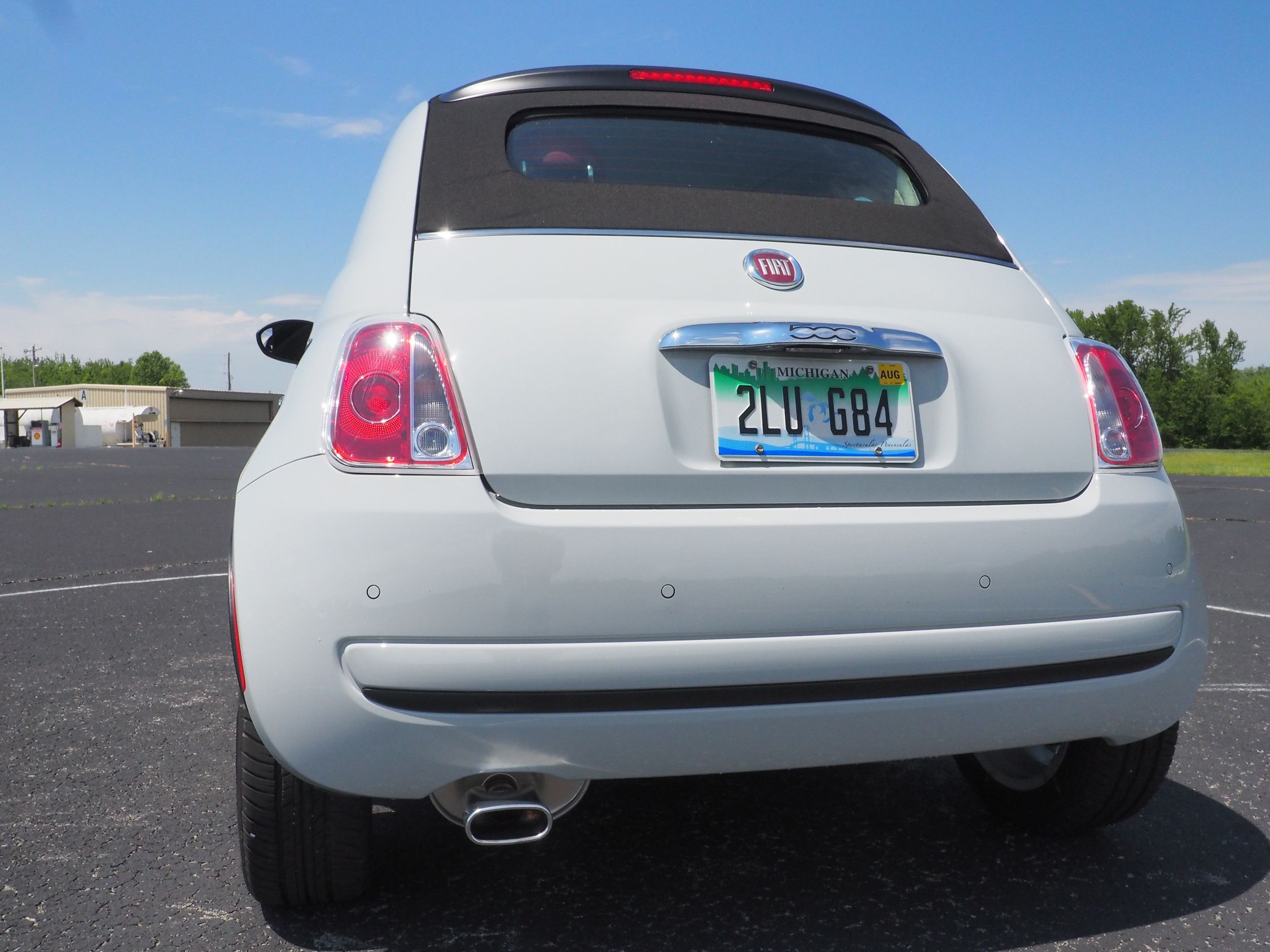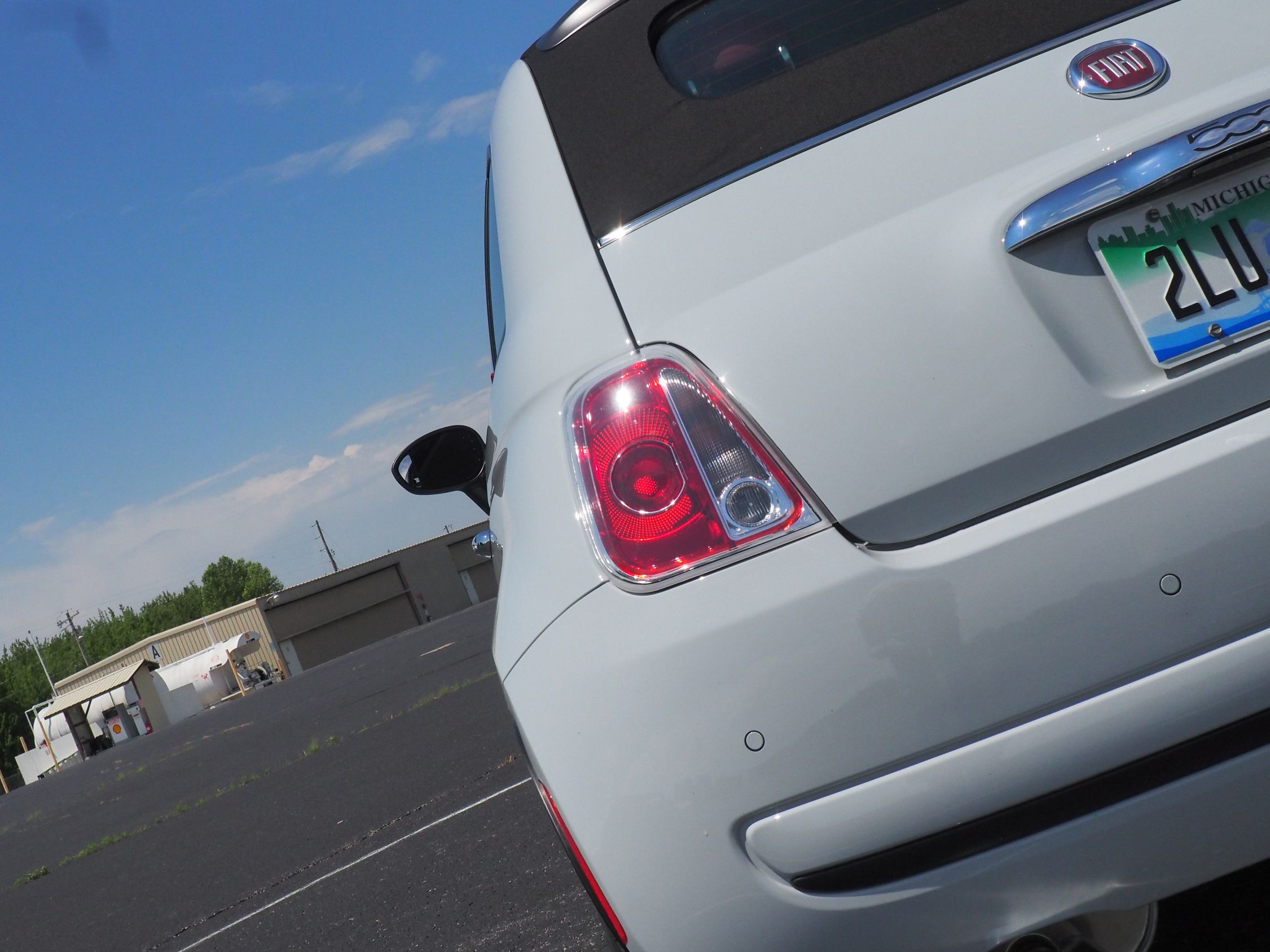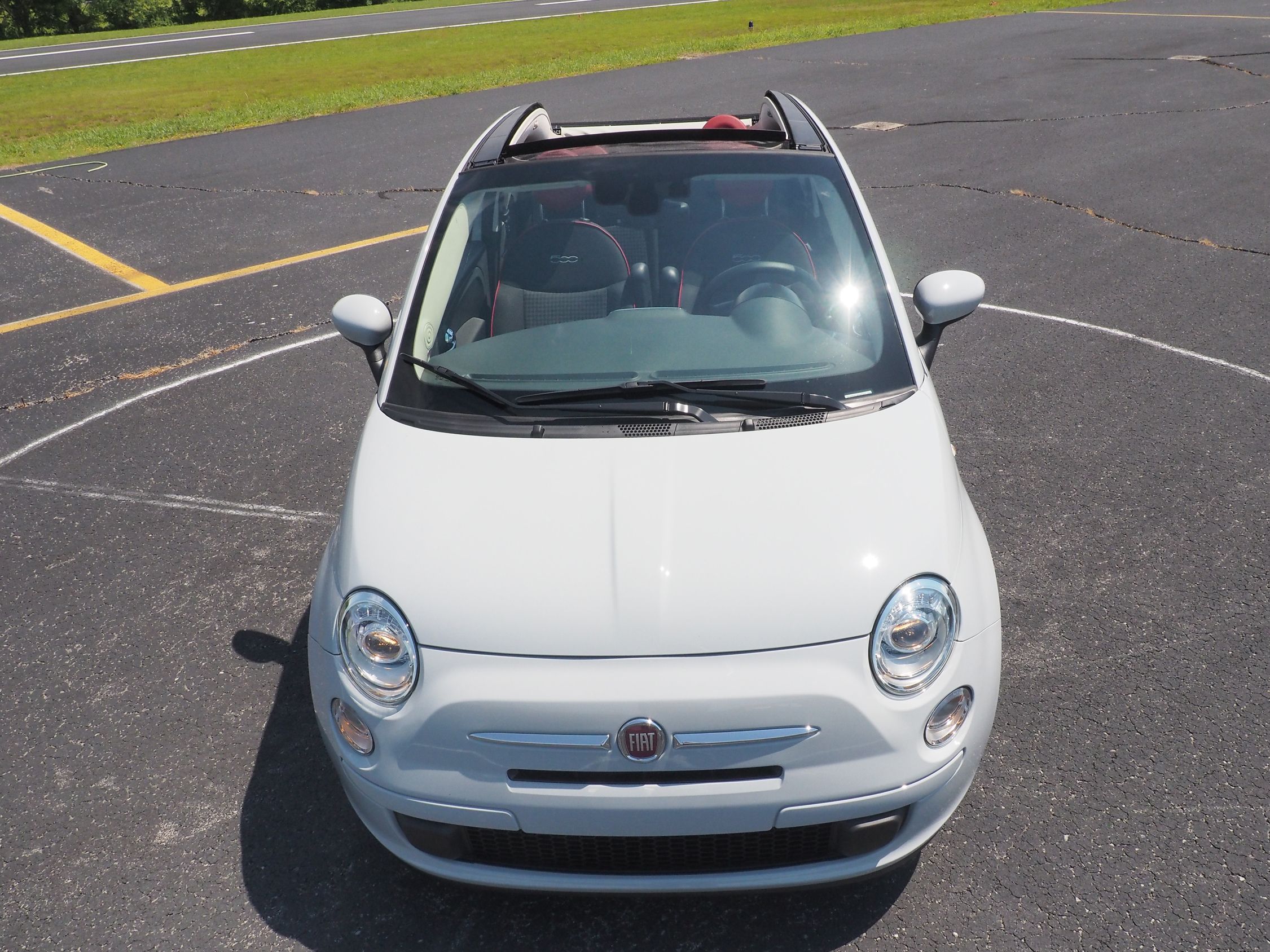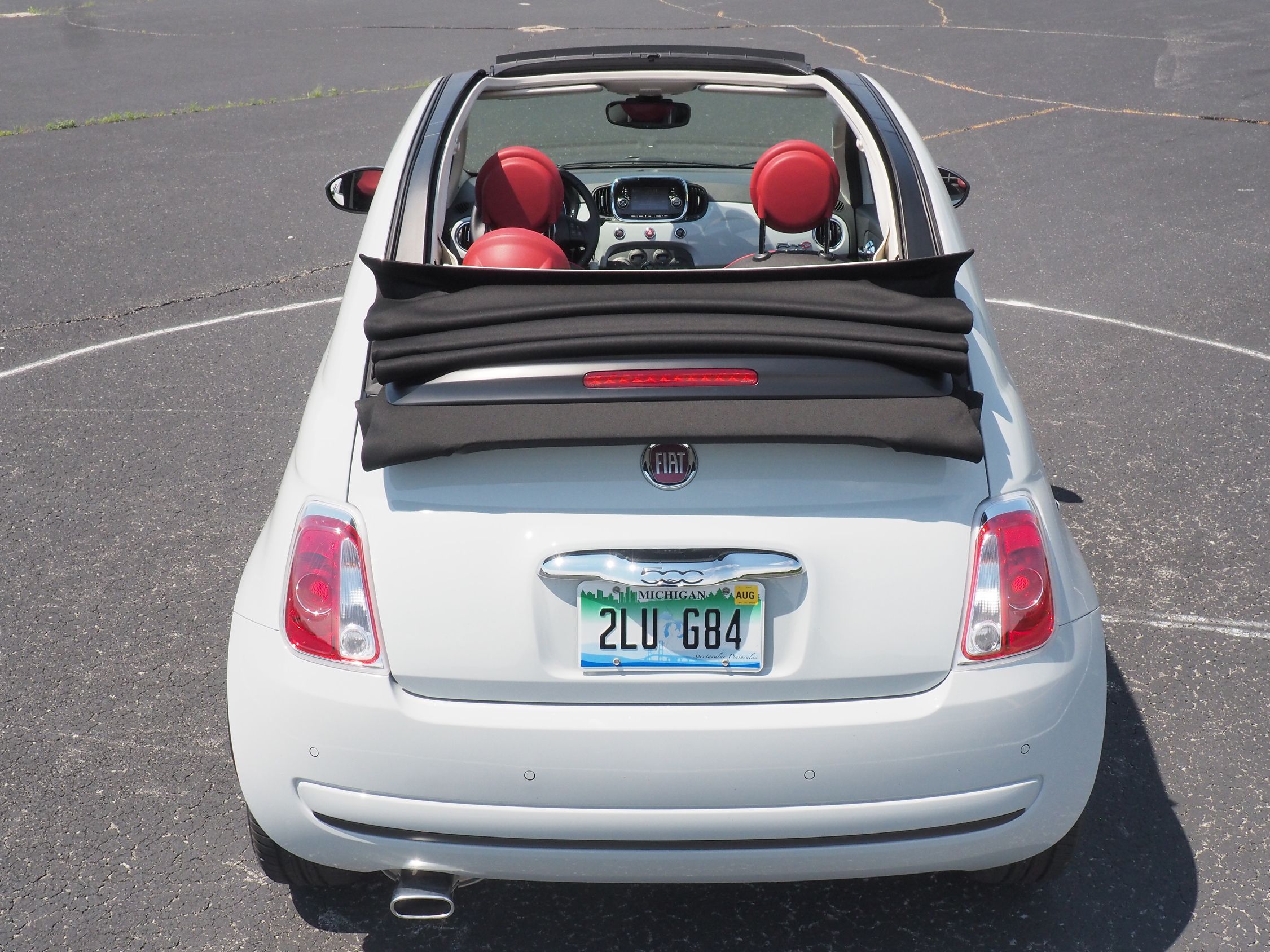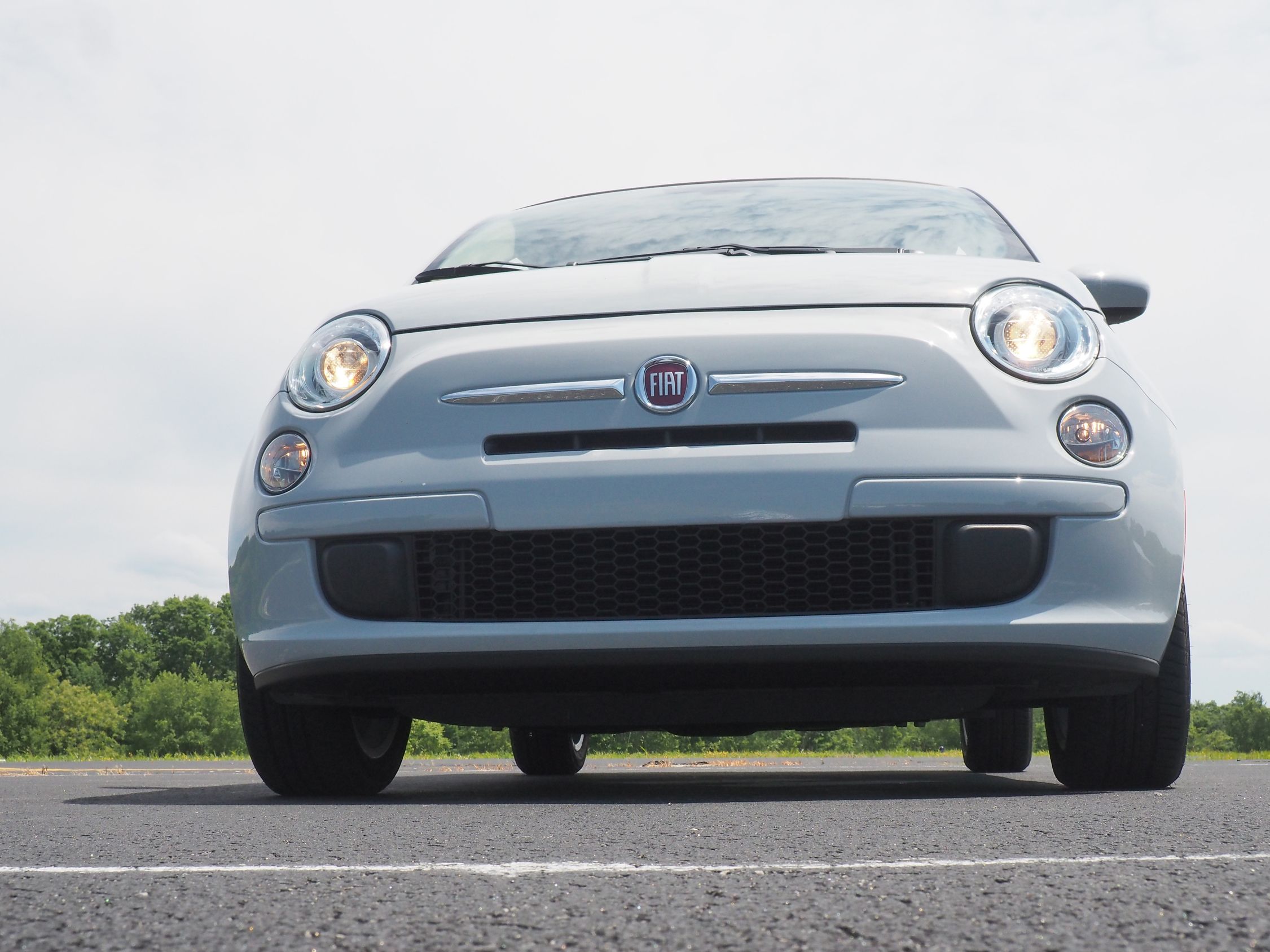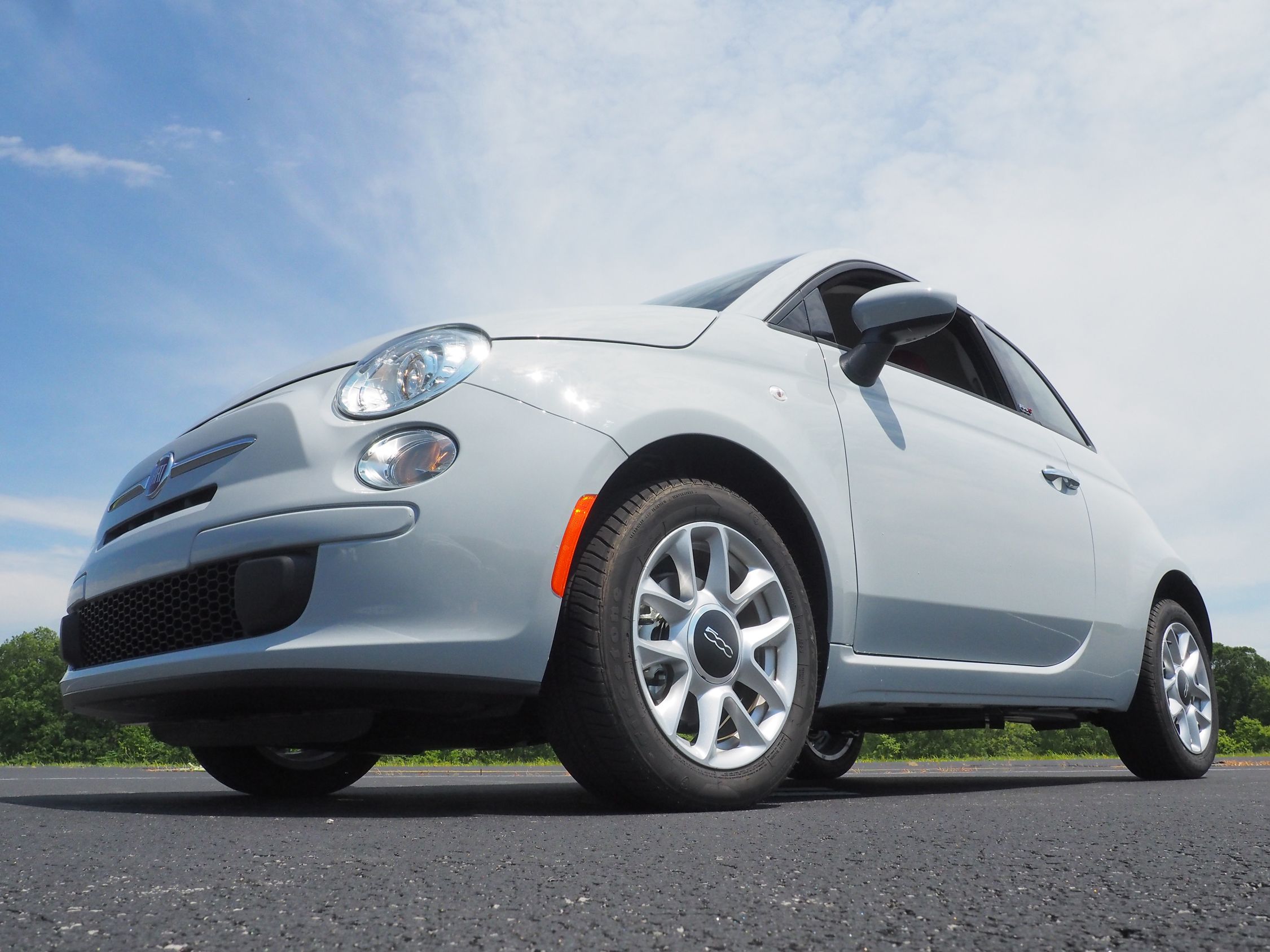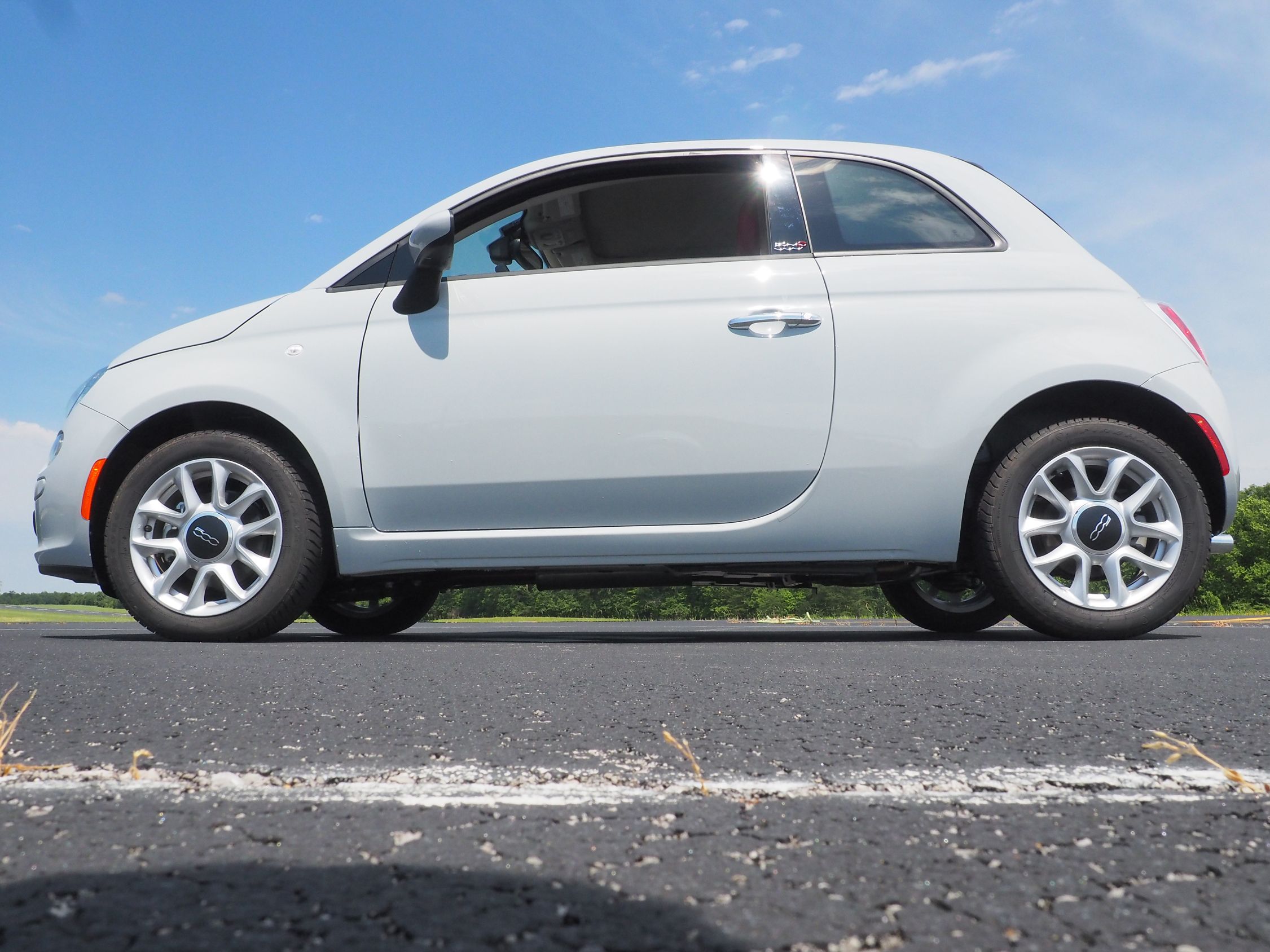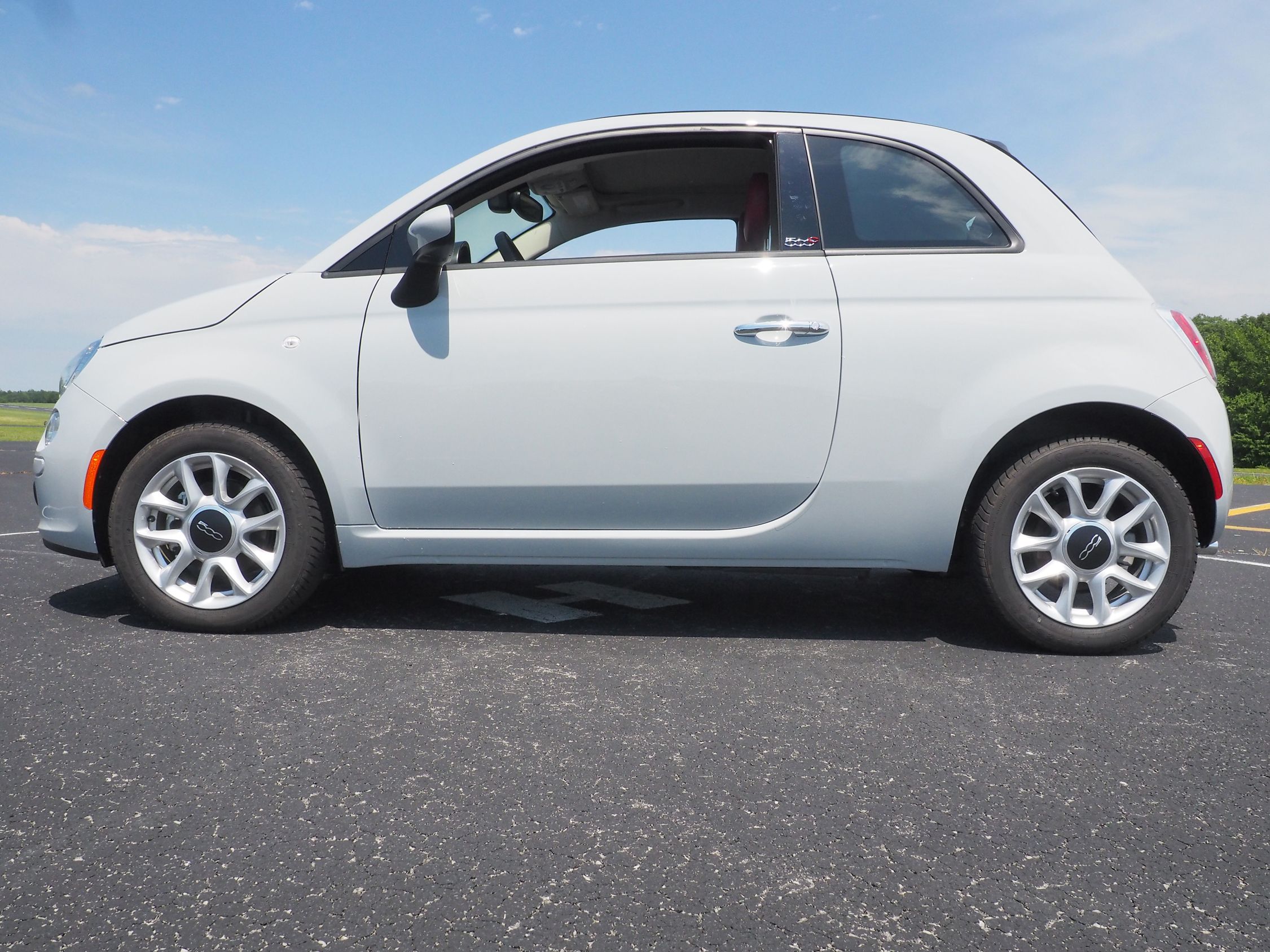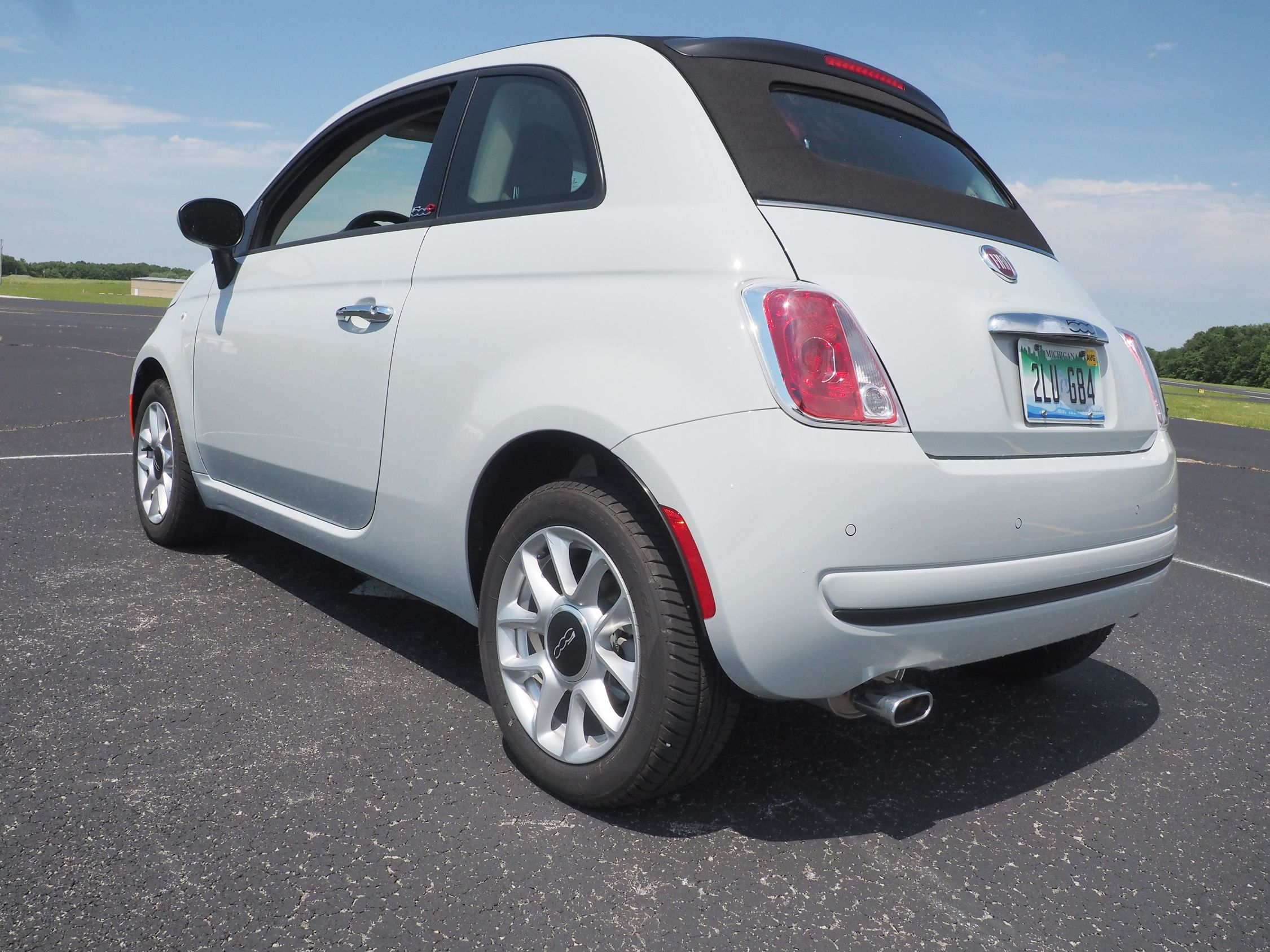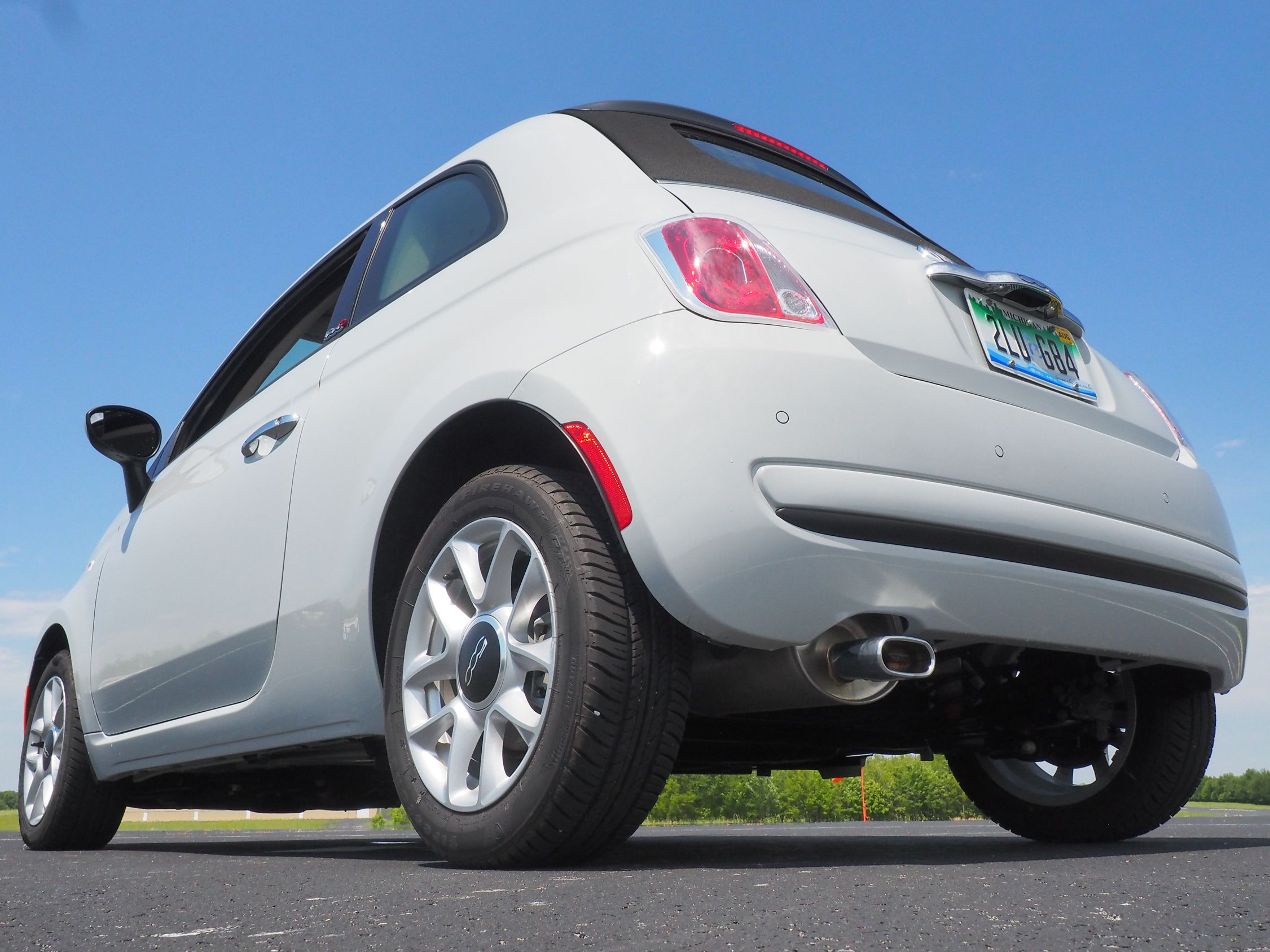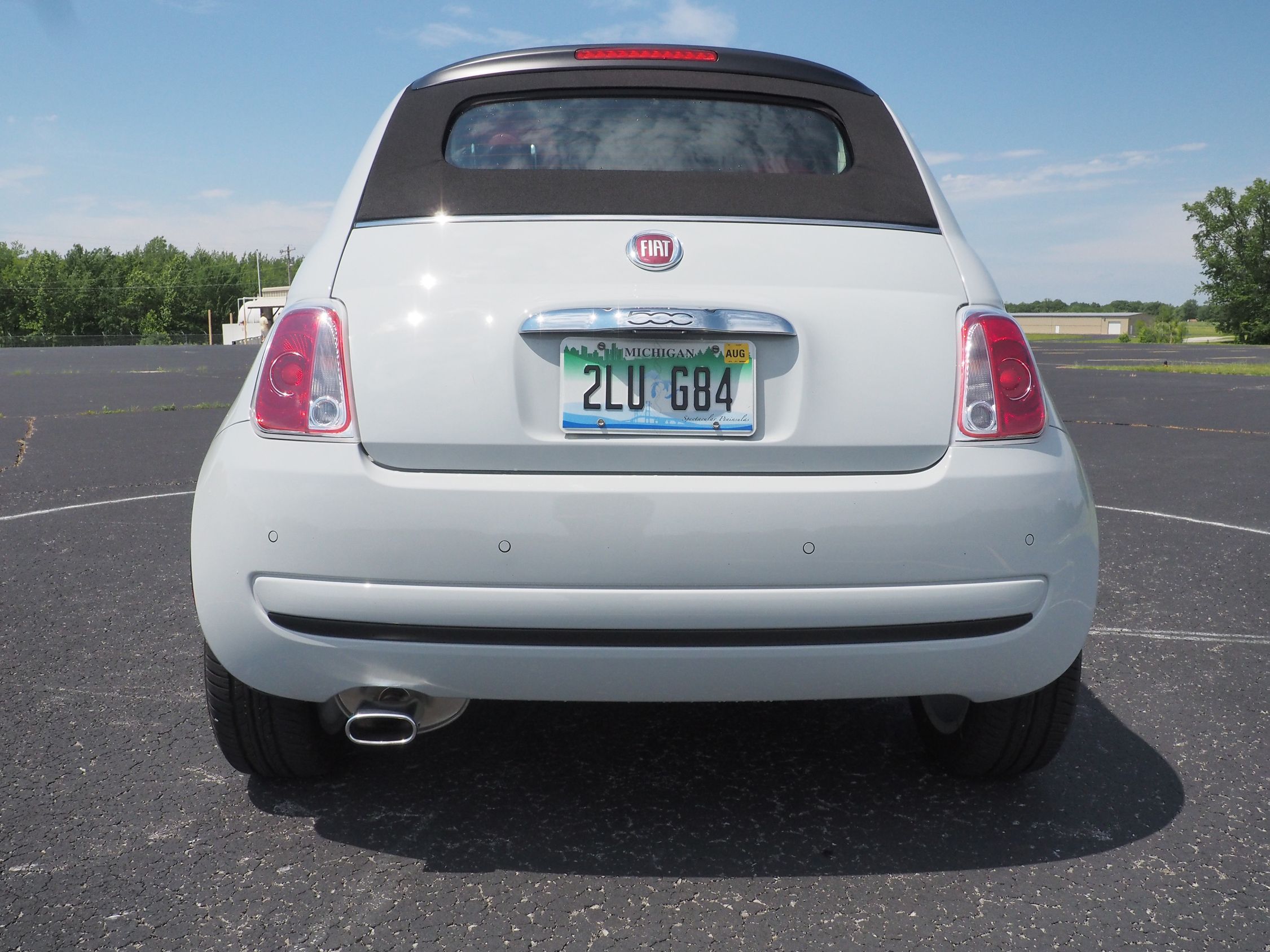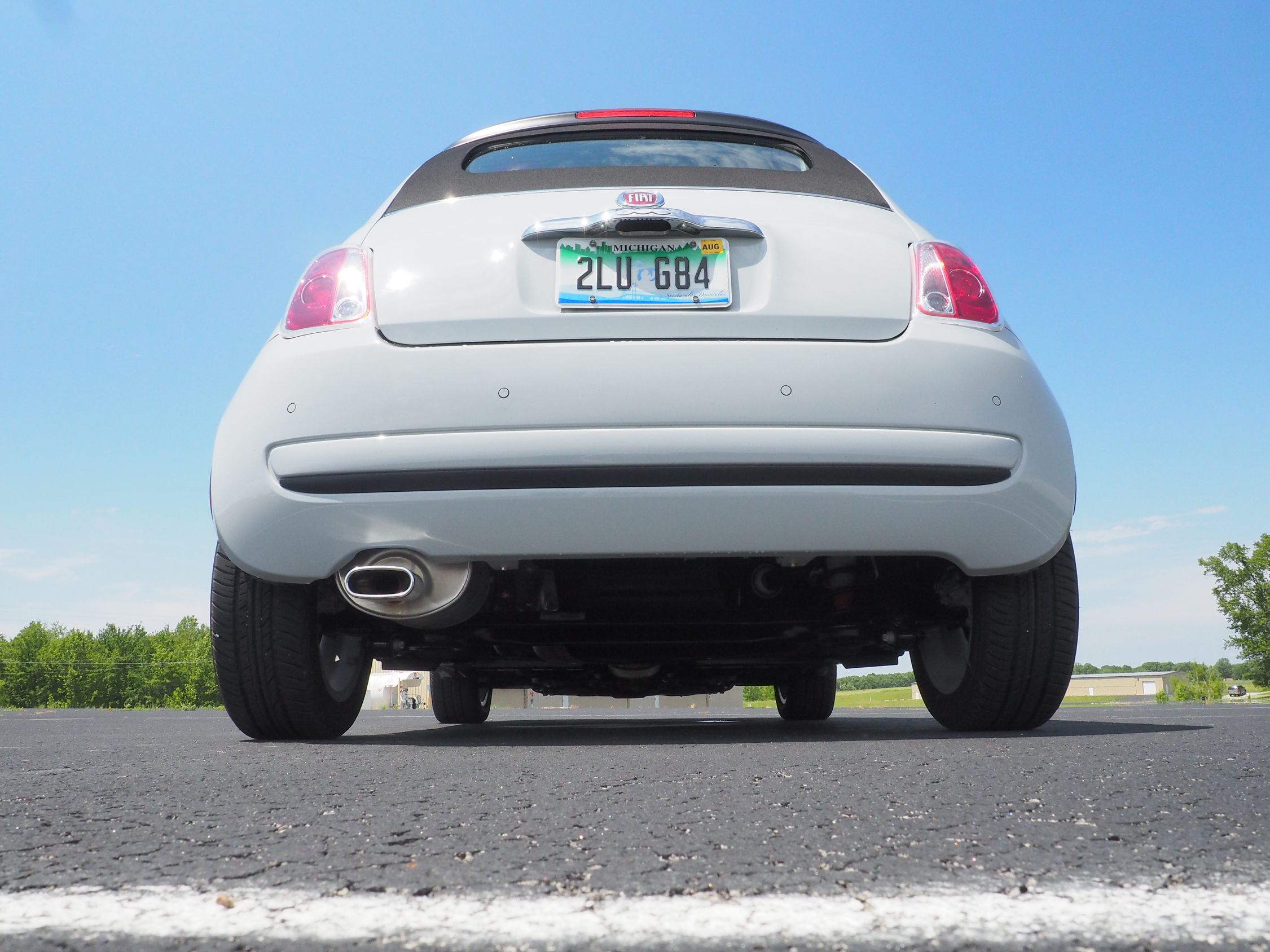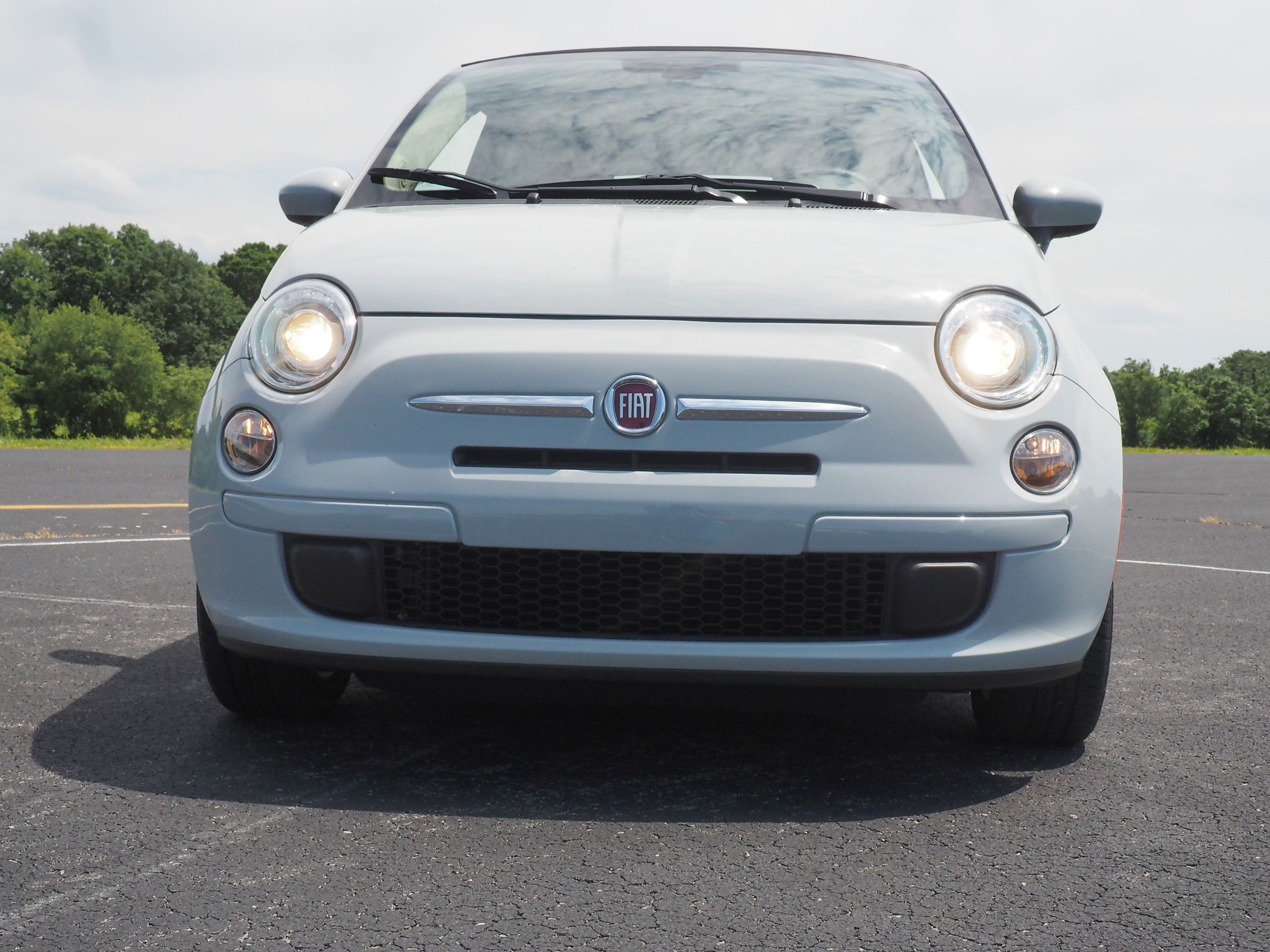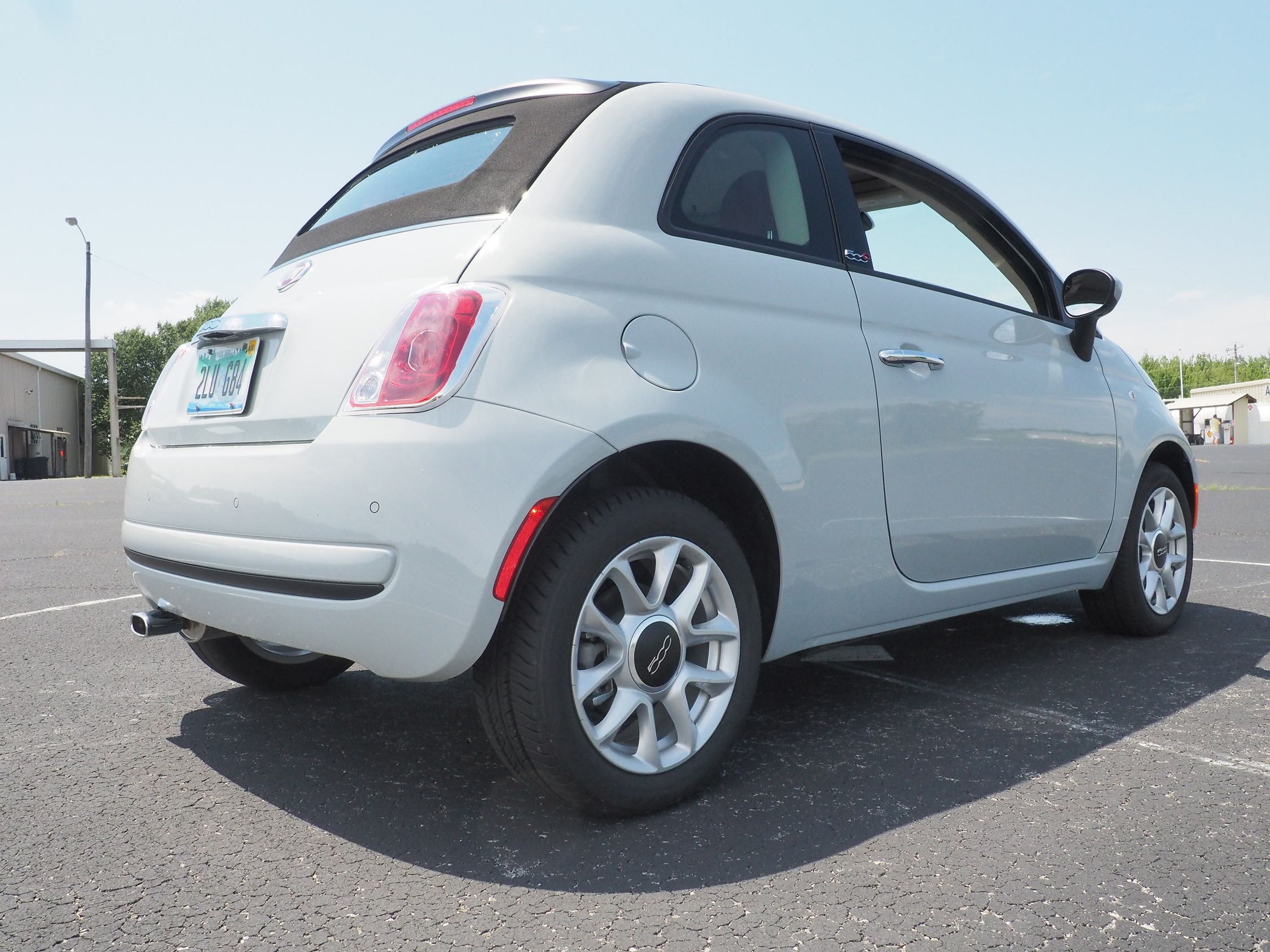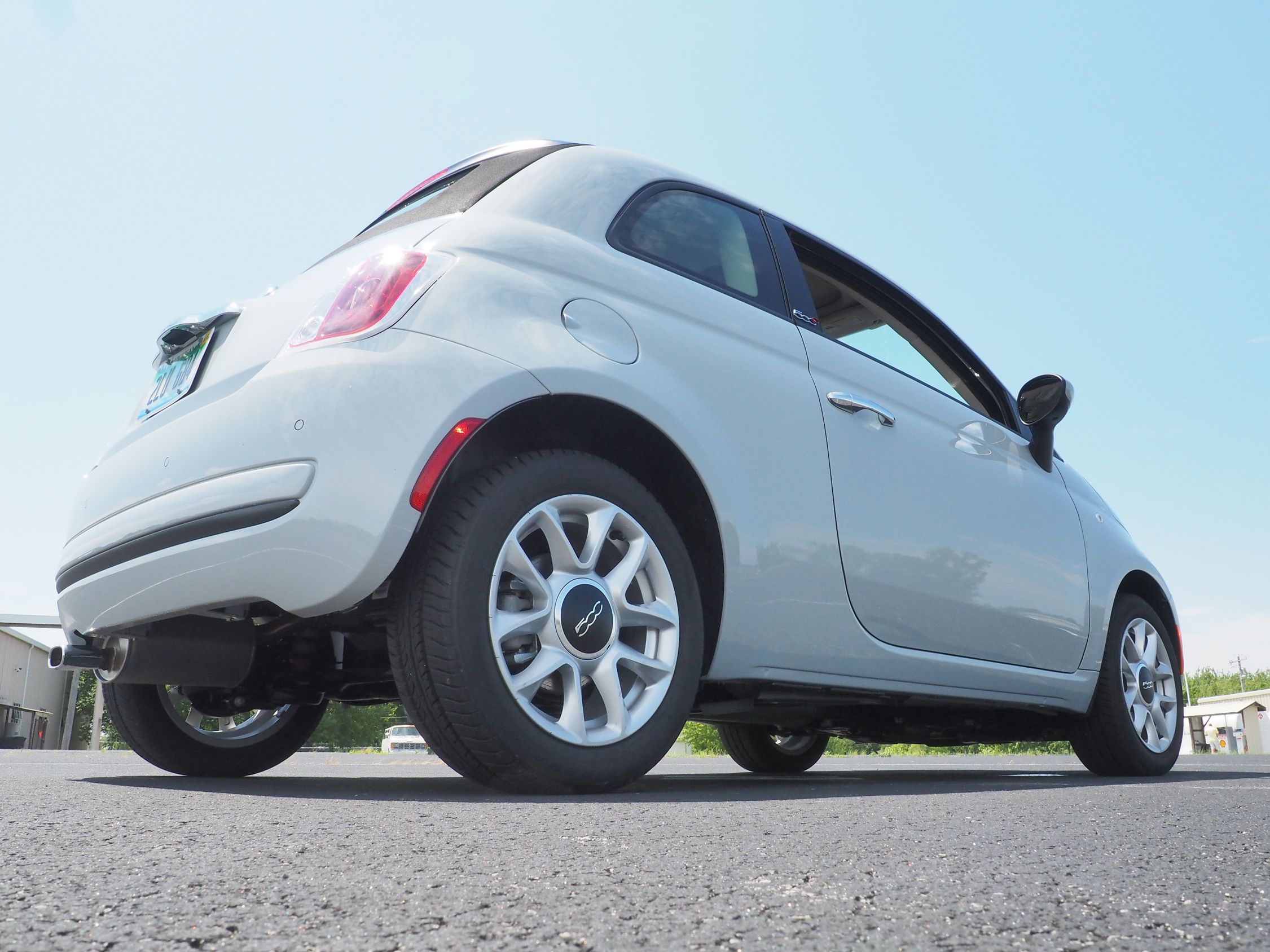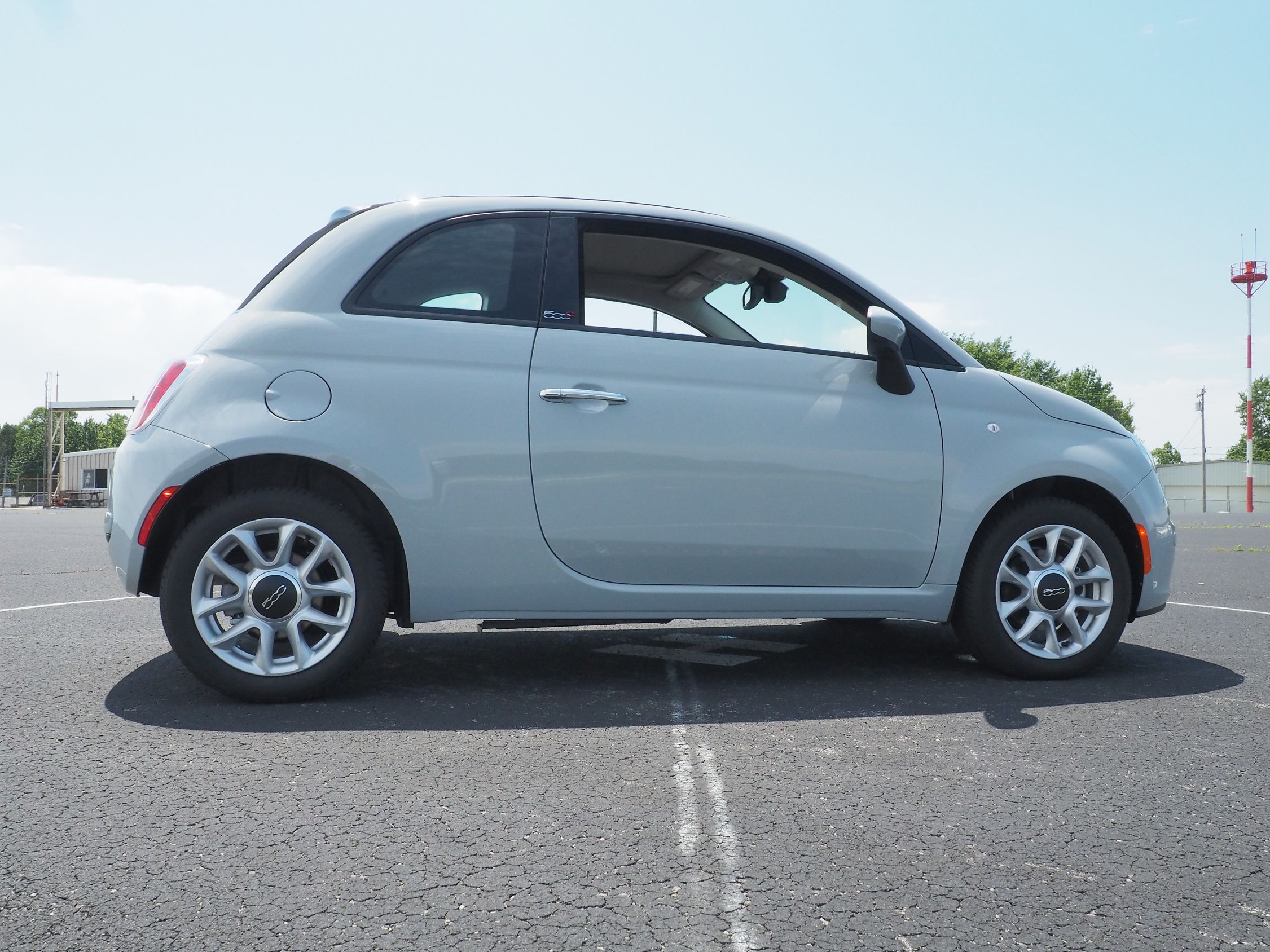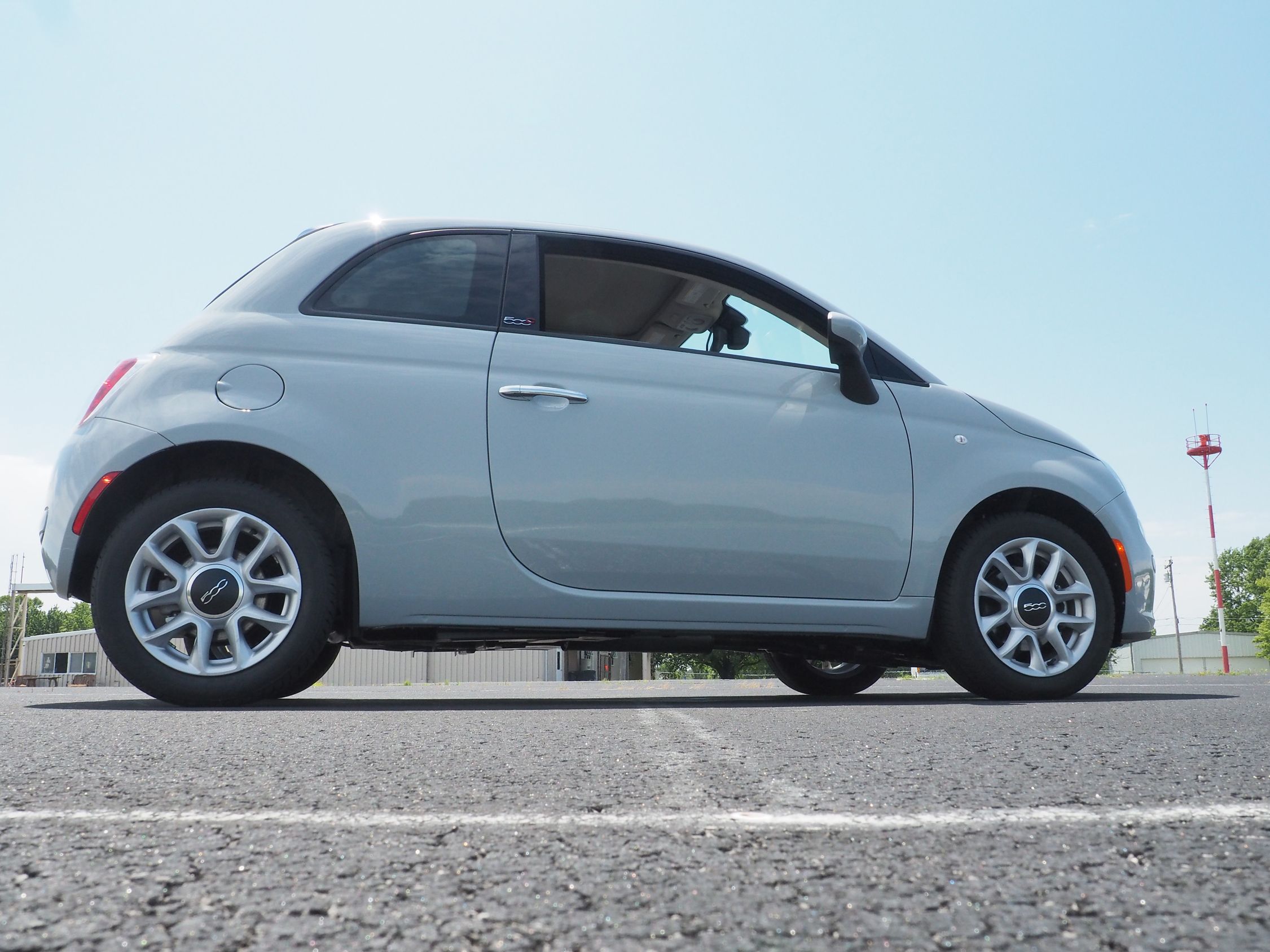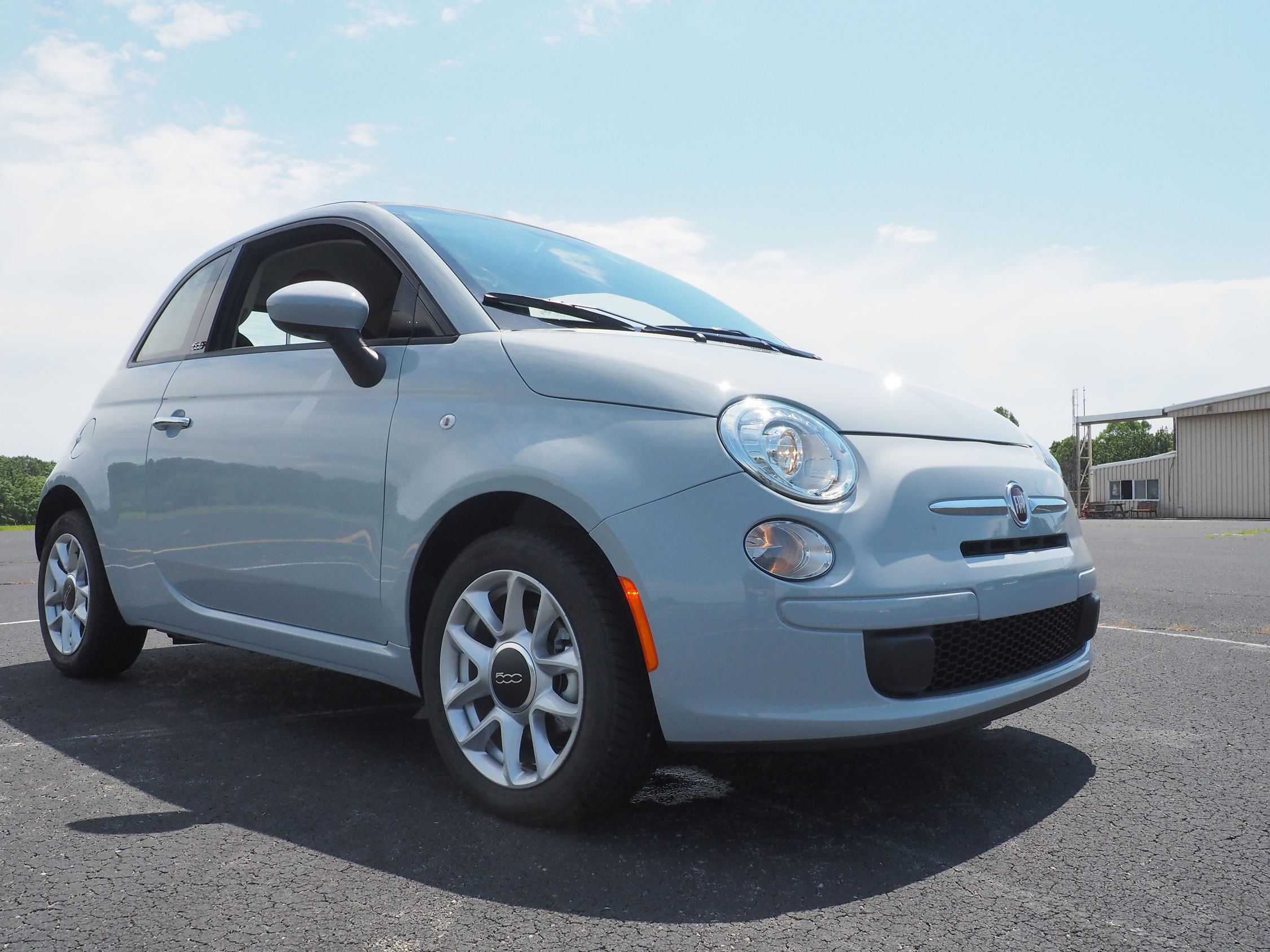Dated and diminutive it may be, but the Fiat 500 remains a frugal and fun -- and tiny -- car. Adding a canvas top to the pint-size Cinquecento just increases the smiles-per-gallon it generates.
As a cheap-and-cheerful commuter, the Fiat 500 has long been a favorite of mine for its European style and driving characteristics. Among cars in its price range, the little Italian remains near the top of my fun-to-drive list. The Fiat 500C has even more charm thanks to its fully retractable roof.
For 2017, Fiat simplified the 500 lineup to just three trims: base-level Pop, leather-trimmed Lounge, and sporty Abarth. All are available with the “C” designation, which stands for “Cabrio.” In prior years, there were twice as many trims available. Most of the equipment from those additional trims is still available in the options list.
2017 Fiat 500C - Driven
- Make: Array
- Model: 2017 Fiat 500C - Driven
- Engine/Motor: inline-4
- Horsepower: 101
- [do not use] Vehicle Model: Array
Exterior Notes
The Fiat 500C I tested was a Pop trim, which meant it had a base price of $16,490. For that buy-in, the exterior of the car looked very nice, with its Grigio Cenre (loosely translated as “gray dew”) paint and 15-inch aluminum alloy wheels. The design of the modern-day 500 is aging just about as well as the classic 500 upon which it is based.
Riding on an ultra-short wheelbase of just 90.6 inches, the Fiat 500 measures just 139.6 inches in total length. It’s narrow, too, with a width of 64.1 inches. Those stats make it plenty maneuverable in tight city streets and parking garages, but they also make the car endearing to behold.
From the front, the Fiat 500c has a cute face, complete with little chrome mustache and red-nose Fiat logo. The eyes on this face are the big, round headlights, with turn signal/daytime running lights below serving as cartoony, blushing cheeks.
The side-view reveals the tall greenhouse that makes getting in and out of the car a breeze. There’s the short hood and the bustle-butt rear end, with wheels pushed way out to the corners. A smooth crease runs from the hood shut-line at the front of the car to the top of the taillight at the rear. A sharper crease at the bottom third of the door reduces the appearance of mass. That’s important, because the modern-day Fiat 500 is a fair bit larger than its grandfather.
From the rear, it’s clear my test car is a cabriolet. The telltale black canvas top surrounds the ovoid rear window, and a black plastic spoiler integrates the high-mounted brake light. Brake lights are rounded triangular shapes that give a modern twist to the original 500’s tall, rectangular taillight shape.
The rear of the 500C is actually more similar to the original Fiat 500 in one notable way: since the original Fiat 500 was a rear-engined car, it lacked the rear cargo hatch found on non-cabriolet modern-day 500s. My 500C tester had a small cargo hatch below the canvas top, which mimicked the engine bonnet of 500s from that bygone era.
Interior Notes
Even though my Fiat 500C tester was the base Pop trim, it was not lacking for interior niceties.
The seats were covered in houndstooth-pattern fabric. They were firmly padded and flat, which was fitting for the car’s “everyman” personality. I found them comfortable for long-distance driving, though some might desire more lumbar support.
The steering wheel was wrapped in what felt like high-quality leather, and the car included cruise and Bluetooth controls in button form on the wheel. Audio controls were located on rockers behind the 9 and 3 o’clock positions on the wheel spokes.
Fiat changed the gauge cluster since the last time I drove a 500. The cluster is a thin film transistor (TFT) screen with a digital readout of all the important information. Gone is the analog gauge that Fiat owners either loved or hated, with its counter-rotating speedometer and tachometer.
Also present in the test car was the now-standard Uconnect 5.0-inch infotainment system in the dash, which is much nicer to use than the single-DIN head unit I’ve experienced in other Fiat 500s I’ve driven in the past. Uconnect remains one of the easiest-to-use infotainment systems in cars today, though the test car lacked Android Auto or Apple CarPlay capability -- something that is supposed to be coming to Uconnect systems in the very near future.
My tester was equipped with Beats Audio, supposedly better than the Alpine-supplied standard fare, at an option price of $695. Also included was navigation and a year of SiriusXM satellite radio for another $695.
My family of four had a great deal of fun driving the Fiat 500C -- not least because of the shocked faces people made when they saw all four of us pile out of the tiny car. I was able to squeeze a rear-facing baby seat in the back row, as long as the passenger front seat was all the way forward. This didn’t leave much room for my wife, but it was doable. A forward-facing child seat fits easily.
Fiat says there’s 31.7 inches of legroom and 36.8 inches of headroom for backseat occupants. Up front, those numbers increase to 40.7 and 38.6 inches, respectively. For front-seat occupants, it’s got a nice seat height that is not at all low-slung. Some have described it as “driving a barstool,” but I didn’t feel like I was sitting quite that high in the 500C.
Now, I’m not saying it’s for everyone, but you can, in fact, carry four people in the little Fiat 500. You don’t need to fear family-ferrying in a Fiat unless you’re a family of more than four people -- or unless you need cargo space. Fiat says there’s just 5.4 cubic feet of luggage space in the 500C. If you opt for the regular hatchback model, that increases to 9.5 cubic feet. One cool thing about the 500C model was that I could lay the rear seats down, open the roof, and have easy access to load or unload cargo.
The Drive
With just 101 horsepower on-tap from the 1.4-liter MultiAir naturally aspirated engine, the 2017 Fiat 500C isn’t going to win any drag races. It’s plenty capable of getting out of its own way, however. If you want to go faster than a Fiat 500 will go, you’re probably breaking the speed limit anyway.
What I like about the Fiat 500C is its combination of value price and solid on-road feel. The little MultiAir four-cylinder engine is a little raspy on startup and displays character missing from similarly low-powered engines from Nissan, Toyota, and Honda. The steering provides more feedback than any of the subcompact players in its price range. The brakes -- four-wheel discs, by the way -- feel great. In all but horsepower, this is a “driver’s car.”
The Fiat 500C is tall, which makes for a surprising amount of interior space but a not-particularly-sporty stance. However, in daily driving, the short wheelbase means the 500C changes directions quickly. Combined with its steering and brakes that are more communicative than anything in its price range, the Fiat 500 induces plenty of smiles when pushed down your favorite twisty country road.
My only nitpick with the test car: It was equipped with the optional (add $995) six-speed automatic transmission. I would rather have the available five-speed manual transmission. The automatic was not slow to react to throttle inputs or anything like that, but it did reduce my level of engagement when driving the car around town. It also reduces fuel economy from an EPA-estimated 40 MPG highway to 33 MPG highway. My fuel economy, with more than 500 miles of driving and a lot of 80-MPH interstate cruising, came in at 31 MPG.
Some folks might not like calling this car a “cabriolet” because its top doesn’t fully disappear. Even with the top stowed in its open position, the side rails of the roof remain in place. This helps maintain chassis rigidity and surely keeps the cost of entry low for the 500C.
Regardless, I loved the open top driving experience with the 500C, and it proved itself perfectly water-tight during an absolute deluge as I drove the streets and interstates of Knoxville, TN. I did wish rearward visibility was better and cargo capacity wasn’t so impacted when the roof was open, however.
The Competition
Open-top motoring in this size category is hard to come by, particularly if you don’t want to spend a pretty penny.
Mini Cooper Convertible
Mini has long been in Fiat’s crosshairs in America, and for good reason: Both companies have a similar design aesthetic, with cars that harken back to iconic designs of the postwar era. Fiat holds the title of value champion in the tiny convertible segment, where a $26,700 Mini Cooper Convertible has a starting price some $10,000 higher than the Fiat 500C.
The Mini’s BMW TwinPower 1.5-liter turbo three-cylinder engine is more advanced than Fiat’s MultiAir naturally aspirated 1.4-liter four-banger, and it makes more power (134 horsepower vs. the Fiat’s 101). The noticeable difference for most drivers won’t be horsepower, but torque, where the Cooper Convertible puts down 162 pound-feet at a diesel-like 1,250 RPM. The little Fiat makes a comparatively limp-wristed 97 pound-feet at 4,000 RPM.
Mini has the edge on Fiat where luxury interior features are concerned, as well. But the Fiat edges it out on legroom and headroom, and the it is a couple hundred pounds lighter, as well. I prefer Fiat’s Uconnect infotainment experience to Mini’s, which shares some DNA with BMW iDrive.
Those wanting a slightly more upscale driving experience will probably favor the Mini Cooper Convertible. Those who want fun on-the-cheap will lean toward the 500C.
Read our full review on the 2016 Mini Cooper Convertible.
Volkswagen Beetle Convertible
Volkswagen’s Beetle Convertible aims at the same buyer demographic as the Fiat 500C and the Mini Cooper Convertible. If you like timeless design, it’s hard to look away from the latest generation of the Beetle.
The 2017 Beetle has a displacement advantage on both of the above competitors, with its 1.8-liter turbocharged four-cylinder. That results in impressive numbers: 170 horsepower and 184 pound-feet of torque. The 2018 Beetle went bigger still, with a 2.0-liter turbo engine that makes just a few more horsepower.
The Beetle is quite a bit larger than the Fiat 500C and Mini Cooper Convertible, with a wheelbase of 100 inches and an overall length of 168.4 inches. It’s also quite a bit wider, at 71.2 inches. Finally, it’s fatter than either of the above, with a curb weight of 3,208 lbs. The result is a car that doesn’t feel as quick to react to driver inputs. Also of importance to driving enthusiasts: There is no manual transmission available in a Beetle convertible anymore, while Fiat and Mini still allow the shift-it-yourself option.
Coincidentally, the Beetle’s extra girth does not result in notable added interior space. There’s 41.3 inches of legroom up front and 31.4 inches of legroom in the rear, with just 7.1 cubic feet of cargo space behind the rear seats. That’s awfully close to the Fiat 500C.
The Beetle’s nostalgia factor is high for many American buyers. Whether shoppers of small non-sports car convertibles think it’s worth VW’s base asking price of $25,440 is the question.
Read our full driven review on the 2015 Volkswagen Beetle Convertible.
Smart fortwo Passion Cabrio
The smart fortwo Passion Cabrio is the odd duck here because it only has seating for two, while every other model compared here will carry four. But unlike the Mini Cooper Convertible and the Volkswagen Beetle Convertible, the fortwo Passion Cabrio is actually somewhat price-competitive with the Fiat 500C. It has a starting price of $18,900.
Like the 500C, the fortwo Passion Cabrio roof retracts sort of like a huge sunroof. But unlike the 500C, the side rails of the Passion Cabrio can be removed and stowed in the smart’s minuscule cargo area, making the car somewhat of a targa-top.
The tiny smart has the edge on even the Fiat 500C where maneuverability is concerned because it is ultra-tiny. It has a wheelbase of 73.7 inches and an overall length of 106.1 inches. The Fiat actually out-muscles the smart’s 898-cc inline three-cylinder engine, which makes just 89 horsepower. However, the smart out-torques the Fiat with 100 pound-feet at 2,500 RPM. It also weighs less than the lithe Fiat, at just 2,150 lbs with the automatic transmission.
Unless your daily routine involves extremely tight parking predicaments, however, the Fiat is the far more practical daily driver. The smart fortwo Passion Cabrio has no extra cargo space beyond the 7.3 cubic feet behind its seats, unless you want to stack cargo in the passenger seat next to you. Those who shift for themselves will also find the Fiat gets better fuel economy despite its added size and weight, with the smart clocking in at 38 MPG highway with its available five-speed manual transmission.
It’s hard to make a case for the smart for all but the most space-constrained environments, based on its price premium and its compromised interior cargo space. Coincidentally, smart announced it will no longer sell a gasoline-powered car in America. All smarts sold new to American consumers from model year 2018-on will be electric-powered.
Read our full review on the 2017 Smart ForTwo Cabrio.
Conclusion
Even though I live in a rural area, where tiny cars like the Fiat 500 are more curiosity than commonplace, I have fallen in love with every iteration of the 500 I have reviewed since 2013. The tiny cars are full of character, and they’re fun to drive.
The little Fiat 500C gave me about 75% of the joy I got driving its sportier, more expensive sister, the Fiat 124 Spider. With the top down and the music up, I had a big, stupid grin on my face doing utterly mundane things like driving to work or stopping at the grocery store to get a gallon of milk on the way home.
No, it wasn’t as fast as the 124 Spider. It lacked a lot that car’s handling prowess in the twisties, as well. But it gave me joy in a way that a similarly priced Nissan Versa Note or Honda Fit could not. Those cars would have more room for passengers and cargo, but the trade-off is numb steering, sloppy transmissions, and uninspiring suspensions.
The Fiat 500C, like all Fiat 500s I have driven, practically begged to be driven hard. I hesitate to say “driven in anger,” because I find it practically impossible to be angry in a Fiat 500. But the more aggressively I drove the little Fiat 500C, the more it seemed to enjoy it.
Che bella!
Disclosure: Fiat provided the vehicle, insurance, and one tank of fuel for this review.
References
Fiat 500
Read our full review on the 2017 Fiat 500.
Read more Fiat news.

